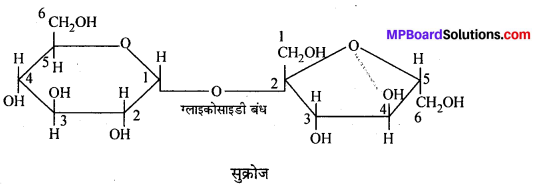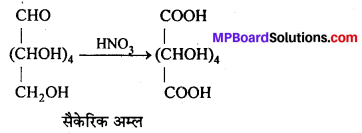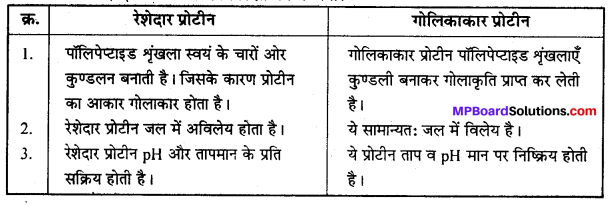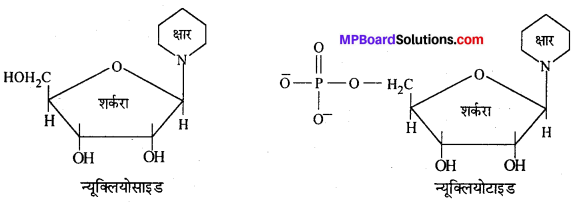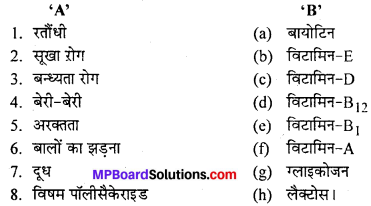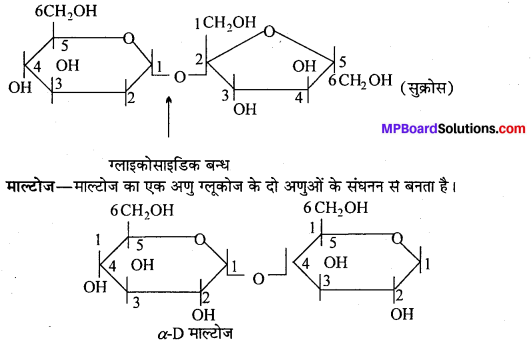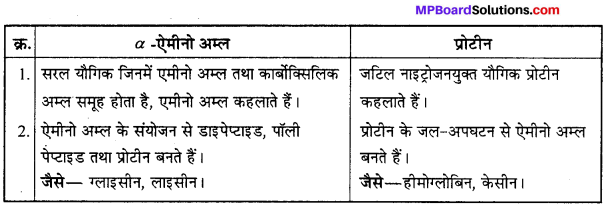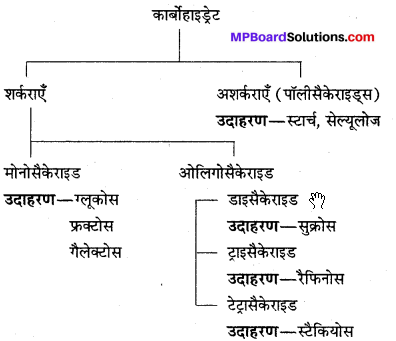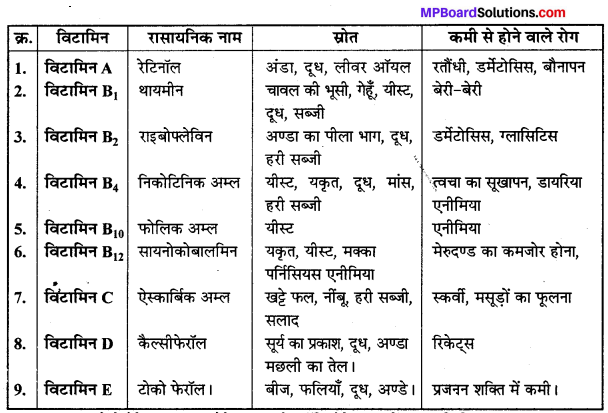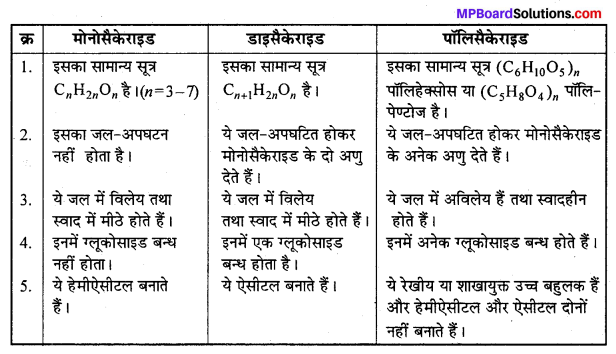MP Board Class 12th Chemistry Solutions Chapter 5 पृष्ठ रसायन
पृष्ठ रसायन NCERT पाठ्यनिहित प्रश्नोत्तर
प्रश्न 1.
जलीय विलयनों के वैद्युत अपघटन में प्रायः प्लैटिनम एवं पैलेडियम जैसे पदार्थ क्यों प्रयुक्त किये जाते हैं ?
उत्तर
प्लैटिनम एवं पैलेडियम जैसी धातु कम क्रियाशील धातु हैं, इसलिए सामान्यत: ये क्रिया नहीं करती उत्पाद के साथ जब जलीय विलयनों का वैद्युत अपघटन किया जाता है।
प्रश्न 2.
ताप बढ़ने पर भौतिक अधिशोषण क्यों घटता है ?
उत्तर
भैतिक अधिशोषण एक ऊष्मा अपक्षेपी प्रक्रम है तथा यह उत्क्रमणीय भी ठोस + गैस ⇌ अधिशोषण + ऊष्मा भौतिक अधिशोषण कम ताप पर सम्पन्न होता है तथा तापमान बढ़ाने पर यह ली-चेटलियर नियम के अनुसार कम होता है।
प्रश्न 3.
अपने क्रिस्टलीय रूपों की तुलना में चूर्णित पदार्थ अधिक प्रभावी अधिशोषक क्यों होते हैं ?
उत्तर
अधिशोषक के पृष्ठीय क्षेत्रफल बढ़ने के साथ अधिशोषण बढ़ता जाता है। अत: चूर्ण अवस्था में या छिद्र युक्त अवस्था में धातुओं का पृष्ठीय क्षेत्रफल अधिक होता है। इसलिए इन अवस्थाओं में अधिशोषण अधिक होता है।
प्रश्न 4.
अमोनिया प्राप्त करने के लिए हॉबर प्रक्रम में CO को हटाना क्यों आवश्यक है ?
उत्तर
हॉबर प्रक्रम से अमोनिया बनाने के लिए ठोस उत्प्रेरक का प्रयोग होता है। उत्पन्न CO को हटाना इसलिए आवश्यक है क्योंकि CO लोहे से क्रिया कर Fe(CO)5 बनाती है जो कक्ष ताप पर द्रव अवस्था में होता है तथा NH3 उत्पादन में बाधा उत्पन्न करता है क्योंकि उच्च ताप पर CO तथा H2 क्रिया करते हैं जिससे उत्पादन घटता है।
प्रश्न 5.
एस्टर का जल अपघटन प्रारंभ में धीमा एवं कुछ समय पश्चात् तीव्र क्यों हो जाता है ?
उत्तर
एस्टर के जलयोजन के दौरान एक उत्पाद कार्बनिक अम्ल बनता है जो उत्प्रेरक की भाँति व्यवहार करता है तथा अभिक्रिया को सक्रिय बनाता है। अतः एस्टर का जलयोजन आरंभ में मंद व बाद में तीव्र हो जाता है।
![]()
प्रश्न 6.
उत्प्रेरण के प्रक्रम में विअधिशोषण की क्या भूमिका है ?
उत्तर
ठोस उत्प्रेरक द्वारा गैसीय अभिकारकों को अधिशोषित करने के बाद मध्य अवस्था ग्रहण करता है। इसके बाद विअधिशोषण होता है जिसमें अणु अलग होते हैं । अतः ठोस उत्प्रेरकों के पृष्ठ बार-बार उपलब्ध होते रहते हैं।
प्रश्न 7.
आप हार्डी शुल्जे नियम में संशोधन के लिए क्या सुझाव दे सकते हैं ?
उत्तर
हार्डी शुल्जे के नियम को निम्न रूप से वर्णित किया जा सकता है। स्कंदन या अवक्षेपण क्षमता स्कंदन या अवक्षेपण मान के व्युत्क्रमानुपाती होता है। दो वैद्युत अपघट्यों की स्कंदन क्षमता की तुलना निम्न रूप से की जाती है –

अत: AlCl3, 559 गुना अधिक स्कंदन क्षमता रखता है NaCl की तुलना में।
प्रश्न 8.
अवक्षेप का मात्रात्मक आकलन करने से पूर्व उसे जल से धोना आवश्यक क्यों है ?
उत्तर
गुणात्मक मान ज्ञात करने के लिए यह आवश्यक है कि अवयवों को पहले धो लेना चाहिए ताकि अशुद्धीय कोलॉइड उत्पन्न होने पर अवक्षेप उत्पन्न न करे। हम जानते हैं कि छानक पेपर से कोलॉइड आर-पार हो जाते हैं।
पृष्ठ रसायन NCERT पाठ्य-पुस्तक प्रश्नोत्तर
प्रश्न 1.
अधिशोषण एवं अवशोषण शब्दों (पदों) के तात्पर्य में विभेद कीजिए। प्रत्येक का एक उदाहरण दीजिए।
उत्तर
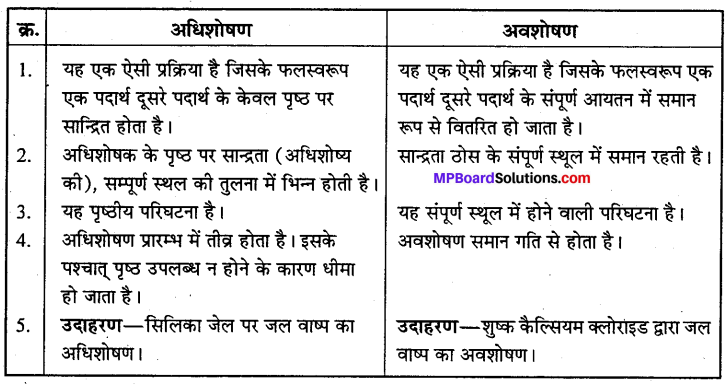
![]()
प्रश्न 2.
भौतिक अधिशोषण एवं रासायनिक अधिशोषण में क्या अन्तर है?
उत्तर-
भौतिक अधिशोषण- भौतिक अधिशोषण में अधिशोषित पदार्थ के अणु अधिशोषक की सतह से दुर्बल आकर्षण बल द्वारा बँधे रहते हैं।
रासायनिक अधिशोषण – रासायनिक अधिशोषण में अधिशोषित पदार्थ अधिशोषक से सामान्य रासायनिक बन्धों द्वारा जुड़े रहते हैं।
भौतिक अधिशोषण और रासायनिक अधिशोषण में अन्तर –
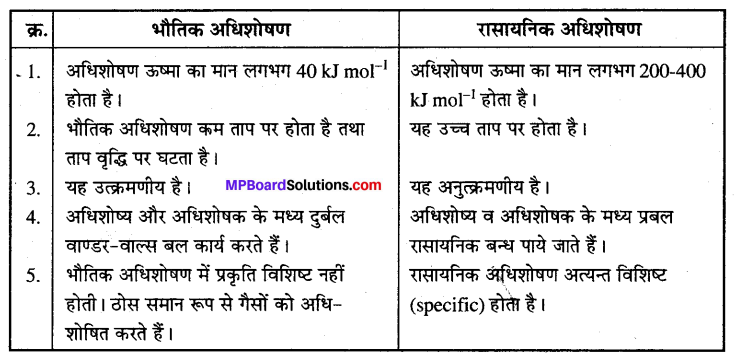
प्रश्न 3.
कारण बताइए कि सूक्ष्म विभाजित पदार्थ अधिक प्रभावी अधिशोषक क्यों होता है ?
उत्तर
चूर्ण अवस्था में पदार्थ का पृष्ठीय क्षेत्रफल अधिक होता है। पृष्ठीय क्षेत्रफल जितना अधिक होगा अधिशोषित गैस का आयतन भी उतना अधिक होगा।
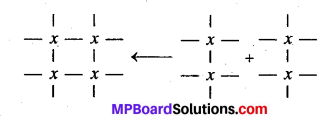
प्रश्न 4.
किसी ठोस पर गैस के अधिशोषण को प्रभावित करने वाले कारक कौन-से हैं ?
उत्तर
किसी ठोस या गैस के अधिशोषण को प्रभावित करने वाले कारक इस प्रकार है –
- गैस की प्रकृति
- अधिशोषक का पृष्ठीय क्षेत्रफल
- दाब
- ताप
- अधिशोषक की सक्रियता।
![]()
प्रश्न 5.
अधिशोषण समतापी वक्र क्या है ? फ्रेण्डलिक अधिशोषण समतापी वक्र का वर्णन कीजिए।
उत्तर
अधिशोषक द्वारा अधिशोषित गैस की मात्रा में स्थिर ताप पर दाब के साथ परिवर्तन एक वक्र के माध्यम से व्यक्त किया जा सकता है, जिसे अधिशोषण समतापी वक्र कहते हैं। अधिशोषण समतापी वक्र दो प्रकार के होते हैं
(i) फ्रॉयन्डलिक समतापी वक्र,
(ii) लैंगमूर समतापी वक्र।
(i) फ्रॉयन्डलिक समतापी वक्र-फ्रॉयन्डलिक ने ठोस अधिशोषक के इकाई द्रव्यमान द्वारा एक निश्चित ताप पर अधिशोषित गैस की मात्रा तथा दाब के मध्य एक प्रयोगाश्रित संबंध दिया। इस संबंध को निम्न समीकरण द्वारा व्यक्त किया जा सकता है –
\(\frac{x}{m}\) = k.p1/n(n>a)………..(1)
जहाँ, x अधिशोषक के m द्रव्यमान द्वारा p दाब पर अधिशोषित गैस का द्रव्यमान है। k एवं n स्थिरांक हैं जो किसी निश्चित ताप पर अधिशोषक एवं गैस की प्रकृति पर निर्भर करते हैं।
ये वक्र इंगित करते हैं कि एक निश्चित दाब पर, ताप बढ़ाने से भौतिक अधिशोषण घटता है। समीकरण (1) का लघुगणक लेने पर
log\(\frac{x}{m}\) = = logk + \(\frac{1}{n}\) log p ………….(2)
जब log\(\frac{x}{m}\) को y-अक्ष तथा log p को x-अक्ष पर लेकर वक्र खींचते हैं, तो एक सीधी रेखा प्राप्त होती
है। यह फ्रॉयन्डलिक समतापी वक्र की वैधता को इंगित करती है।
ढाल = \(\frac{1}{n}\) = और y-अक्ष पर अन्त: खण्ड = log k
गुणक \(\frac{1}{n}\) का मान 0 एवं 1 के मध्य हो सकता है अतः समीकरण (2) दाब के सीमित विस्तार तक ही
लागू होती है।
(i) जब \(\frac{1}{n}\) =0,\(\frac{x}{m}\) = स्थिरांक, तब अधिशोषण दाब से स्वतंत्र होता है।
(ii) जब \(\frac{1}{n}\) =1 \(\frac{x}{m}\) = kp अर्थात , तब अधिशोषण में परिवर्तन दाब के अनुक्रमानुपाती होता है।
प्रश्न 6.
अधिशोषक के सक्रियण से आप क्या समझते हैं ? यह कैसे प्राप्त किया जाता है ?
उत्तर
अधिशोषक के सक्रियण का अर्थ है, अधिशोषक की अधिशोषण क्षमता। अतः अधिशोषक की सक्रियता को बढ़ाने के लिए निम्न क्रियाकलाप किये जाते हैं
(i) धात्विक अधिशोषक को यांत्रिक या रासायनिक विधि द्वारा खुरदरा करके।
(ii) अधिशोषक को छोटे टुकड़ों में तोड़कर।
(iii) कुछ अधिशोषकों की अधिशोषण क्षमता उच्च ताप पर गर्म करके बढ़ाई जा सकती है।
![]()
प्रश्न 7.
विषमांगी उत्प्रेरण में अधिशोषण की क्या भूमिका है ?
उत्तर
सामान्यतः विषमांगी उत्प्रेरण में, अभिक्रिया गैसीय जबकि उत्प्रेरक ठोस अवस्था में होते हैं। अभिक्रियक अणुओं का ठोस उत्प्रेरक के पृष्ठ पर भौतिक या रासायनिक अधिशोषण द्वारा अधिशोषण हो जाता है। अभिक्रियत अणुओं की सान्द्रता बढ़ने से या ठोस उत्प्रेरक के पृष्ठ पर अभिक्रियक अणुओं में टूटकर सक्रिय स्पीशिज बनने से जो कि तीव्रता से अभिक्रिया करती है। अभिक्रिया की गति बढ़ जाती है। उत्पाद अणुओं का विशोषण हो जाता है और अब उत्प्रेरक सतह दोबारा अधिक अभिक्रियक अणुओं को अधिशोषित करने के लिए उपलब्ध हो जाती है। यह सिद्धान्त विषमांगी उत्प्रेरण का अधिशोषण कहलाता है।
प्रश्न 8.
अधिशोषण हमेशा ऊष्माक्षेपी क्यों होता है ?
उत्तर
अधिशोषण से अव्यवस्था कम होती है अर्थात् ΔS = + होता है। प्रक्रम को सम्पन्न करने के लिए ΔG का मान ऋणात्मक होना आवश्यक है। अतः समीकरण ΔG = ΔH – TΔS में ΔG तभी ऋणात्मक होगा, जब ΔH का मान ऋणात्मक होगा अर्थात् ऊष्माक्षेपी। अत: अधिशोषण प्रक्रम ऊष्माक्षेपी होता है।
‘प्रश्न 9.
कोलॉइडी विलयनों को परिक्षिप्त प्रावस्था एवं परिक्षेपण माध्यम की भौतिक अवस्थाओं के आधार पर कैसे वर्गीकृत किया जाता है ?
उत्तर
परिक्षिप्त प्रावस्था तथा परिक्षेपण माध्यम की भौतिक अवस्थाओं (ठोस, द्रव अथवा गैस) के आधार पर निम्नलिखित आठ प्रकार के कोलॉइडी निकाय बनते हैं।
3 परिक्षिप्त प्रावस्था x 3 परिक्षेपण माध्यम -1 = 8 कोलॉइड
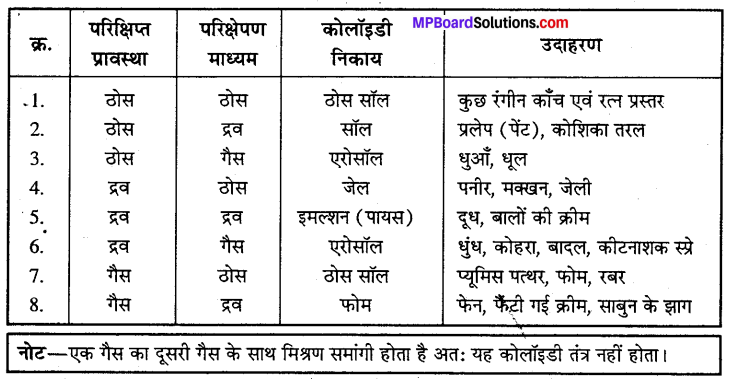
प्रश्न 10.
ठोसों द्वारा गैसों के अधिशोषण पर दाब एवं ताप के प्रभाव की विवेचना कीजिए।
उत्तर
अधिशोष्य गैस का दाब – साम्यावस्था पर अधिशोषक पर अधिशोष्य गैस के दाब का मान बढ़ाने से अधिशोषण बढ़ जाता है। कम ताप पर गैस में वृद्धि करने से अधिशोषण की मात्रा तेजी से बढ़ती है, किन्तु उच्च दाब पर अधिशोषण एक अधिकतम मान प्राप्त कर लेता है।
ताप (Temperature) – अधिशोषण एक ऊष्माक्षेपी प्रक्रम है। अतः लीशातेलिए सिद्धान्त से, ताप बढ़ाने पर अधिशोषण कम हो जाता है।
प्रश्न 11.
द्रवरागी एवं द्रवविरागी सॉल क्या होते हैं ? प्रत्येक का एक-एक उदाहरण दीजिए। द्रवविरोधी सॉल आसानी से स्कंदित क्यों हो जाते हैं ?
उत्तर
द्रवरागी कोलॉइड (द्रव से स्नेह करने वाला) उन कोलॉइडी सॉल को जिन्हें परिक्षिप्त प्रावस्था तथा उचित परिक्षेपण माध्यम को सम्पर्क में लाने मात्र से प्राप्त किया जाता है, द्रवरागी (द्रव-स्नेही) कोलॉइडी सॉल कहते हैं । यह स्थायी होते हैं। इन्हें उत्क्रमणीय कोलॉइडी सॉल भी कहते हैं, क्योंकि कोलॉइडी विलयन में से परिक्षेपण माध्यम को भौतिक विधियों जैसे वाष्पीकरण द्वारा अलग किया जा सकता है।
उदाहरण-गोंद, जिलेटिन, स्टार्च, रबड़ आदि।
![]()
द्रवविरागी कोलॉइड (द्रव से घृणा करने वाला) इस प्रकार के सॉल केवल पदार्थों (परिक्षिप्त प्रावस्था) को परिक्षेपण माध्यम में मिश्रित करने से नहीं बनते है। ये स्थायी नहीं होते है। ऐसे सॉल को वैद्युत-अपघट्य की थोड़ी सी मात्रा मिलाकर, गर्म करके या हिलाकर आसानी से अवक्षेपित या स्कंदित किया जा सकता है। द्रवविरागी सॉल के परिरक्षण के लिए स्थायी कारकों की आवश्यकता होती है। ।
उदाहरण-गोल्ड सॉल, As2O3 सॉल, Fe(OH)3 सॉल आदि।
द्रवविरागी सॉल के स्कंदन का कारण-सॉल के कणों पर उपस्थित आवेश को हटाकर या आवेश को … उदासीन करके दवविरागी सॉल का स्कंदन या अवक्षेपण हो जाता है अर्थात् ये कण एक-दूसरे के समीप आकर पुंजित हो जाते हैं एवं गुरुत्व बल के कारण नीचे बैठ जाते हैं (दूसरे शब्दों में, स्कंदन या अवक्षेपण हो जाते हैं)। वैद्युत-अपघट्य की थोड़ी सी मात्रा मिलाकर ऐसा किया जाता है।
प्रश्न 12.
बहुअणुक एवं वृहदाणुक कोलॉइड में क्या अन्तर है ? प्रत्येक का एक-एक उदाहरण दीजिए। संगुणित या सहचारी कोलॉइड (Micelle) इन दोनों प्रकार के कोलॉइडों से कैसे भिन्न हैं ?
उत्तर
बहुआण्विक, वृहत् आण्विक एवं संगुणित कोलॉइड में अंतर
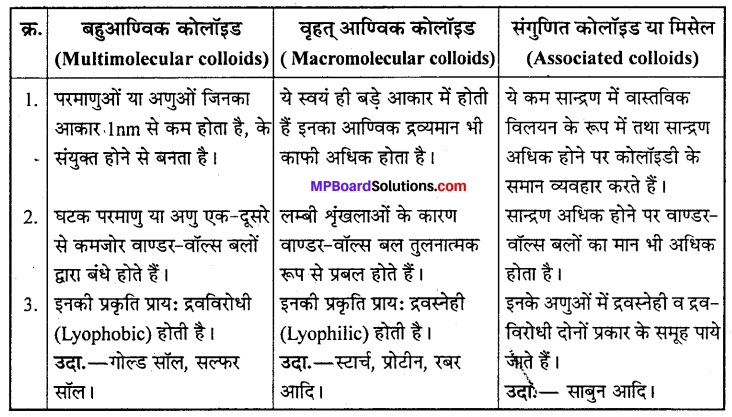
प्रश्न 13.
एन्जाइम क्या होते हैं ? एन्जाइम उत्प्रेरण की क्रिया विधि को संक्षेप में लिखिए।
उत्तर
एन्जाइम, जीवित स्पीशीज में पाये जाने वाले नाइट्रोजन युक्त कार्बनिक संकुल यौगिक हैं। एन्जाइम, मानव शरीर में होने वाली बहुत-सी बायो रासायनिक अभिक्रियाओं को उत्प्रेरित करते हैं जैसे पाचन क्रिया। एन्जाइमों को इसी कारण जैव उत्प्रेरक (Bio-catalyst) भी कहा जाता है।
उदाहरणार्थ –
(i) केन सुगर (शर्करा) का व्युत्क्रमण, इन्वर्टेज के द्वारा उत्प्रेरित होता है।

ग्लूकोज फ्रक्टोज एन्जाइम उत्प्रेरण की क्रियाविधि (Mechanism of enzyme catalysis)-एन्जाइम की सतह पर अभिलाक्षणिक आकृति युक्त विभिन्न कोटर या रिक्तियाँ उपस्थित होती हैं। अभिकारक के अणु (सब्सट्रेट) जिनकी आकृति इनकी पूरक होती हैं, वे इन रिक्तियों या कोटर में व्यवस्थित हो जाते हैं या फिट हो जाते हैं। यह उसी प्रकार से सम्पन्न होता है जैसे उपयुक्त चाबी, ताले में फिट हो जाती है। इस तरह सक्रिय एन्जाइम पदार्थ (सब्सट्रेट) संकुल बन जाता है जो कि बाद में उत्पाद में विघटित हो जाता है। इसमें निम्न पद होते हैं –
![]()
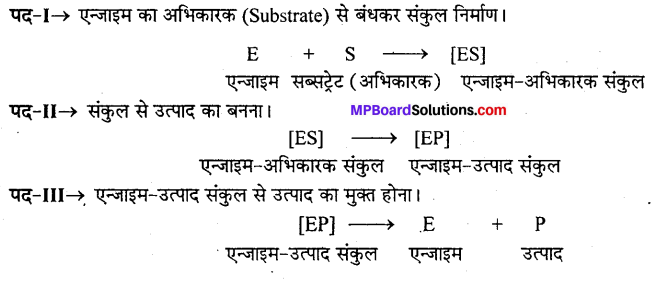
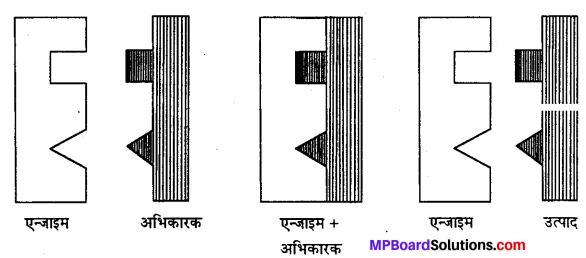
प्रश्न 14.
कोलॉइडी को निम्न आधार पर कैसे वर्गीकृत किया गया है ?
(i) घटकों की भौतिक अवस्था
(ii) परिक्षिप्त प्रावस्था की प्रकृति
(iii) परिक्षिप्त प्रावस्था एवं परिक्षेपण माध्यम के मध्य अन्योन्य क्रिया।
उत्तर
कोलॉइड का वर्गीकरण (Classification of colloid)-कोलॉइड विलयन को निम्न आधारों पर वर्गीकृत किया जा सकता है –
- परिक्षिप्त प्रावस्था व परिक्षेपण माध्यम की भौतिक अवस्था के आधार पर ।
- परिक्षेपण माध्यम की प्रकृति के आधार पर।
- प्रावस्थाओं की अन्तःक्रिया के आधार पर।
1. परिक्षिप्त प्रावस्था व परिक्षेपण माध्यम की भौतिक अवस्था के आधार पर वर्गीकरणपरिक्षिप्त प्रावस्था (Dispersed phase) व परिक्षेपण माध्यम की भौतिक अवस्था जो कि क्रमशः ठोस, द्रव या गैस हो सकते हैं, कुल आठ प्रकार के कोलॉइडी तंत्र सम्भव है। इसके उदाहरण तथा विशिष्ट नाम नीचे तालिका में दिया गया है। यहाँ यह ध्यान देने योग्य है, एक गैस को दूसरी गैस में मिलाने पर पूरी तरह से समांग मिश्रण बनता है अतः यह कोलॉइडी तंत्र नहीं हो सकता।
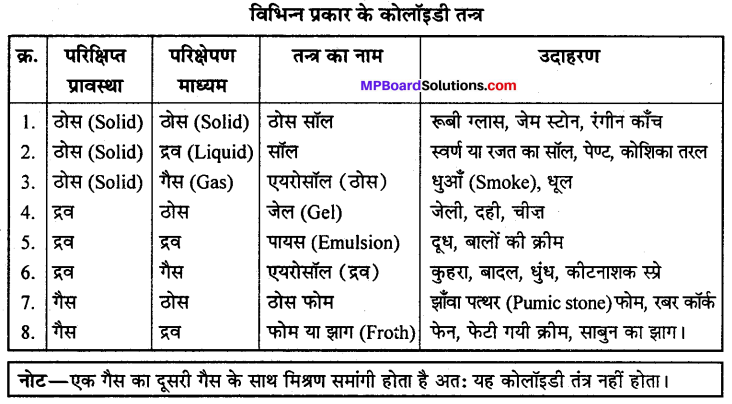
विभिन्न प्रकार के कोलॉइडी तंत्र में से सॉल जेल व पायस अधिक महत्वपूर्ण हैं।
2. परिक्षेपण माध्यम की प्रकृति के आधार पर वर्गीकरण-इस प्रकार का वर्गीकरण परिक्षेपण माध्यम पर आधारित होता है जिसमें कोलॉइडी कण धंसे रहते हैं। परिक्षेपण माध्यम के आधार पर कोलॉइडी निकायों को कुछ विशिष्ट नाम प्रदान किये जाते हैं।

3. परिक्षिप्त प्रावस्था तथा परिक्षेपण माध्यम के बीच अन्तःक्रिया की प्रकृति के आधार पर वर्गीकरण-परिक्षिप्त प्रावस्था तथा परिक्षेपण माध्यम के बीच की क्रिया की प्रकृति के आधार पर कोलॉइडी विलयनों को दो वर्गों में वर्गीकृत किया जा सकता है –
- द्रवस्नेही (Lyophilic solutions)
- garanteit (Lyophobic solutions)
(i) द्रवस्नेही कोलॉइड (Lyophilic colloids) – ये इस प्रकार के कोलॉइडी विलयन होते हैं जिसमें परिक्षिप्त प्रावस्था के कणों की परिक्षेपण माध्यम से बन्धुता या लगाव रहता है। ये प्रायः कोलॉइडी विलयन स्थायित्व युक्त होते हैं। ये विलयन दोनों प्रावस्थाओं के बीच प्रबल आकर्षण बलों के कारण स्वयं ही स्थायित्व युक्त होते हैं । इस प्रकार के कोलॉइडी विलयन उत्क्रमणीय प्रकृति के होते हैं । वाष्पन करने के पश्चात् प्राप्त ठोस को सरलतापूर्वक परिक्षेपण माध्यम से मिलाने पर पुनः कोलॉइडी विलयन प्राप्त हो जाता है। उदाहरण-गोंद, जिलेटिन, स्टार्च आदि।
![]()
(ii) द्रवविरोधी कोलॉइड (Lyophobic colloids) – इस प्रकार के कोलॉइडी विलयन में परिक्षिप्त प्रावस्था के कणों की, परिक्षेपण माध्यम के साथ किसी प्रकार की बन्धुता या आकर्षण नहीं होता। इस प्रकार के विलयन कम स्थायी होते हैं तथा आसानी से बनाये भी नहीं जा सकते। इस प्रकार के कोलॉइडी विलयन में अल्प मात्रा में विद्युत्-अपघट्य मिलाने पर या गर्म करने पर आसानी से अवक्षेपण या स्कन्दन हो जाता है। ये अनुत्क्रमणीय प्रकृति के होते हैं। विलयन के वाष्पन के बाद प्राप्त ठोस को पुनः परिक्षेपण माध्यम से मिलाने पर कोलॉइडी विलयन प्राप्त नहीं होता है।
उदाहरण-स्वर्ण, रजत के कोलॉइडी विलयन, Fe(OH)3, As2S3 आदि।
प्रश्न 15.
निम्नलिखित परिस्थितियों में क्या प्रेक्षण होंगे –
(i) जब प्रकाश किरण पुंज कोलॉइडी सॉल में से गमन करता है?
(ii) जलयोजित फेरिक ऑक्साइड सॉल में NaCl वैद्युत अपघट्य मिलाया जाता है।
(iii) कोलॉइडी सॉल में से विद्युत् धारा प्रवाहित की जाती है ?
उत्तर
(i) जब प्रकाश किरण पुंज कोलॉइडी सॉल में गमन करता है तो प्रकाश का प्रकीर्णन होता है और किरण का पथ प्रदीप्त हो जाता है।
(ii) जब जलयोजित फेरिक ऑक्साइड सॉल में NaCl वैद्युत अपघट्य मिलाया जाता है तो फेरिक हाइड्रॉक्साइड सॉल के कणों पर उपस्थित धनावेश Cl– आयनों पर उपस्थित ऋणावेश से उदासीन हो जाता है जिससे स्कंदन हो जाता है।
(iii) जब कोलॉइडी सॉल में वैद्युत धारा प्रवाहित की जाती है तो कोलॉइडी कण विपरीत आवेश युक्त इलेक्ट्रोड की ओर गमन करते हैं । यह परिघटना वैद्युत कण संचलन कहलाती है।
प्रश्न 16.
इमल्सन क्या है ? इनके विभिन्न प्रकार क्या हैं ? प्रत्येक प्रकार का उदाहरण दीजिए।
उत्तर
“ऐसा कोलॉइडी तन्त्र जिसमें परिक्षिप्त प्रावस्था तथा परिक्षेपण माध्यम दोनों द्रव हों, पायस कहलाता है।”
पायस दो प्रकार के होते हैं –
- जल में तेल (O/w) – जब किसी परिक्षेपण माध्यम जल में तेल की छोटी-छोटी कोलॉइडी आकार की बूंदें परिक्षिप्त प्रावस्था के रूप में होती हैं तो इस प्रकार के पायस को जल में तेल प्रकार के पायस कहते हैं। उदाहरण—मक्खन, कोल्ड-क्रीम। .
- तेल में जल (W/O) – जब जल की थोड़ी-सी मात्रा को तेल की अधिक मात्रा में परिक्षिप्त किया जाता है तो इस प्रकार बनने वाला पायस तेल में जल प्रकार का पायस कहलाता है।
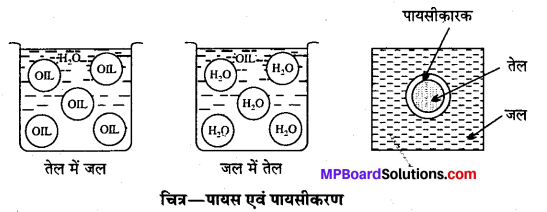
प्रश्न 17.
पायसीकर्मक पायस को स्थायित्व कैसे देते हैं ? दो पायसीकर्मकों के नाम लिखिए।
उत्तर
पायसीकर्मक पायस-पायस के स्थायित्व के लिये इसमें पायसीकारक मिलाया जाता है। पायसीकारक माध्यम एवं निलंबित कणों के मध्य एक अंतरापृष्ठीय फिल्म बनाता है।
तेल/जल पायस के लिए प्रोटीन, गोंद पायसीकारक है। तथा जल/तेल पायस के लिए वसीय अम्लों के, भारी धातुओं के लवण प्रमुख पायसीकारक हैं।
प्रश्न 18.
“साबुन की क्रिया पायसीकरण एवं मिसेल बनने के कारण होती है,” इस पर टिप्पणी कीजिए।
उत्तर-
साबुन की कार्यविधि (Action of Soap)-साबुन की कार्यविधि उसके मिसेल के समान कार्य करने की प्रवृत्ति पर आधारित है । साबुन में मैले कपड़े को साफ करने की क्षमता है सिर्फ जल यह कार्य नहीं कर सकता। हमारे द्वारा पहने गये कपड़ों के मैले हो जाने का कारण यह है कि हमारे शरीर से जो पसीना निकलता है उसके कारण कपड़ा तेलयुक्त हो जाता है। वायुमण्डल से धूल के कण तेल में चिपक जाते हैं और हमारा कपड़ा मैला हो जाता है। कपड़े को साफ करने के लिए उसे पानी में डुबाकर उसमें साबुन लगाते हैं । जलीय विलयन में साबुन के वियोजन से कार्बोक्सिलेट आयन (RCOO–) तथा सोडियम आयन (Na+) प्राप्त होते हैं। कार्बोक्सिलेट आयन के ऐल्किल भाग में लम्बी हाइड्रोकार्बन श्रृंखला रहती है। वह कार्बोक्सिलेट आयन की पूँछ बनाता है जो तेल की बूंद की ओर निर्देशित रहती है। कार्बोक्सिलेट आयन का COO– भाग सिर (head) बनाता है जो जल की ओर निर्देशित रहती है। डिटरजेण्ट में So42- भाग सिर बनाता है (चित्र देखिए)
चित्र को देखने से यह स्पष्ट है कि साबुन, तेल का जल में स्थायी पायस बनने में सहायक है। साबुन दोनों के बीच सेतु का कार्य कर रहा है, अत: पायसीकारक है। तेल की बूँद के धूल के कणों सहित कपड़े से निकल जाती है तथा पायस बना लेती है। इस प्रकार कपड़ा धूल के कण से मुक्त हो जाता है।
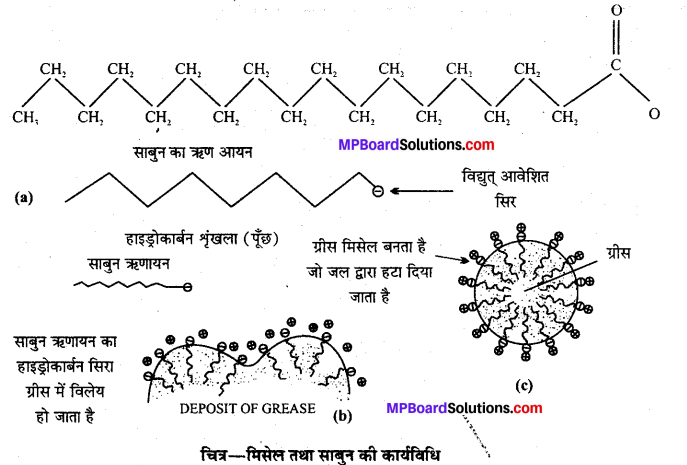
प्रश्न 19.
विषमांगी उत्प्रेरण के चार उदाहरण दीजिए।
उत्तर
विषमांग उत्प्रेरण (Heterogeneous catalysis)-यदि अभिकारक व उत्प्रेरक अलग-अलग प्रावस्था में रहते हैं तो इसे विषमांग उत्प्रेरण कहा जाता है।
उदाहरण
(i) N2व H2 के संयोग से अमोनिया बनने की क्रिया (हैबर विधि) में आयरन ठोस उत्प्रेरक के रूप में होते हैं।

(ii) H2SO4 निर्माण की सम्पर्क विधि में SO2(g) का ऑक्सीकरण SO3 में Pt उत्प्रेरक की उपस्थिति में होता है।

(iii) प्लेटिनम उत्प्रेरक की उपस्थिति में अमोनिया का नाइट्रिक ऑक्साइड में ऑक्सीकरण। (नाइट्रिक एसिड बनाने की ओस्टवाल्ड विधि)
![]()
(iv) हाइड्रोजनीकरण अभिक्रिया
![]()
![]()
प्रश्न 20.
उत्प्रेरक की सक्रियता एवं वरणक्षमता का क्या अर्थ है ?
उत्तर
सक्रियता (Activity)-उत्प्रेरक की सक्रियता का आशय है, रासायनिक अभिक्रिया की गति बढ़ाने की इसकी क्षमता। कुछ उदाहरणों में अभिक्रिया का वेग लगभग 10 गुना तक बढ़ जाता है। उदाहरणार्थ शुद्ध हाइड्रोजन व शुद्ध ऑक्सीजन का आपस का मिश्रण उत्प्रेरक की अनुपस्थिति में आपस में कोई अभिक्रिया नहीं करता । उत्प्रेरक के रूप में प्लैटिनम की उपस्थिति में मिश्रण में अभिक्रिया अत्यन्त तेज गति से सम्पन्न होकर जल बनता है।

रासायनिक अधिशोषण की मात्रा के ऊपर सक्रियता निर्भर करती है। अधिशोषण को निश्चित रूप से मजबूत होना चाहिए परन्तु इतना भी अधिक सामर्थ्य युक्त न हो कि अधिशोषित पदार्थ की गतिशीलता बिल्कुल समाप्त हो जाये या दूसरे अभिकारक के अधिशोषित होने के लिये स्थान ही उपलब्ध न हो।
(ii) वरणक्षमता या चयनात्मकता (Selectivity)-उत्प्रेरक की चयनात्मकता का अर्थ है अभिक्रिया अन्य को छोड़कर किसी उत्पाद विशेष को बनाने हेतु दिशा प्रदान करना। अर्थात कोई उत्प्रेरक किसी विशेष अभिक्रिया को ही उत्प्रेरित करता है सभी को नहीं।
उदाहरणार्थ –

प्रश्न 21.
जिओलाइटों द्वारा उत्प्रेरण के कुछ लक्षणों का वर्णन कीजिए।
उत्तर
जिओलाइट महीन छिद्रयुक्त सिलिकेट्स के त्रिविमीय नेटवर्क वाले सूक्ष्म-रन्ध्री ऐलुमिनोसिलीकेट होते हैं। जिओ-लाइट का सामान्य सूत्र –
Mx/n [(AlO2)x (SiO)2y] mH2O
जहाँ n धातु आयन Mn+ की संयोजकता है । त्रिविमीय संरचना के कारण जिओलाइट अत्यधिक छिद्रयुक्त संरचना का होता है। इसमें कुछ सिलिकन परमाणु ऐलुमिनियम के परमाणुओं द्वारा प्रतिस्थापित होकर Al – 0 – Si ढाँचा बनाते हैं।
जिओलाइट पेट्रो रसायन उद्योग में हाइड्रोकार्बनों के भंजन एवं समावयवन में उत्प्रेरक के रूप में व्यापक रूप से प्रयुक्त किये जा रहे हैं। ZMS-5 पेट्रोलियम उद्योग में प्रयुक्त होने वाला एक महत्वपूर्ण जिओलाइट उत्प्रेरक है। यह ऐल्कोहॉल का निर्जलीकरण करके हाइड्रो-कार्बनों का मिश्रण बनाता है और उन्हें सीधे ही गैसोलीन में परिवर्तित कर देता है।
![]()
प्रश्न 22.
आकृति वरणात्मक उत्प्रेरण क्या है ?
उत्तर
आकृति वरणात्मक उत्प्रेरक या जिओलाइट (Shape selective catalysts or Zeolites)उत्प्रेरक की क्रिया अति विशिष्ट होती है। यह अति विशिष्ट प्रकृति उत्प्रेरक की रन्ध्र या छिद्र संरचना तथा अभिकारक एवं उत्पाद के अणुओं के आकार पर निर्भर करती है। इस प्रकार के उत्प्रेरकों को आकृति चयन करने वाला उत्प्रेरक कहा जाता है। जैसे-जिओलाइट। .
जिओलाइट उत्प्रेरकों का सर्वाधिक दिलचस्प पहलू इनका आकृति चयनात्मक होना है। उत्प्रेरक की आकृति चयनात्मकता, उत्प्रेरक की कोटर संरचना या छिद्र संरचना पर आधारित होती है। जिओलाइट में कोटर का आकार सामान्यतया 260 pm से 740 pm के मध्य होता है। अभिकारक व उत्पाद में अणुओं के आकार के आधार तथा जिओलाइट के पिंजड़ों (Cage) या कोटर के आकार पर रासायनिक क्रिया विशिष्ट ढंग से सम्पन्न होती है। यह इसलिये महत्वपूर्ण है क्योंकि किसी विशेष आकार व आकृति के अणु ही इन कोटरों में घुसकर अधिशोषित हो पाते हैं। यदि अणु इनके आकार से बड़े होते हैं तो ये छिद्रों में नहीं घुस पाते और यदि ये आकार में छोटे होते हैं तो ये उत्प्रेरक के छेद में से निकल जाते हैं। अभिक्रिया जल के अणुओं के निष्कासन तथा बहुलीकरण के द्वारा आगे बढ़ती है।

प्रश्न 23.
निम्न पदों (शब्दों) को समझाइए-
(i) वैद्युत कण संचलन
(ii) स्कंदन
(iii) अपोहन
(iv) टिण्डल प्रभाव।
उत्तर
(i) विद्युत् कण संचलन (Electrophoresis)—कोलॉइड कणों पर धन अथवा ऋण विद्युत् आवेश रहता है। अतः जब कोलॉइड विद्युत्-क्षेत्र में रखा जाता है तो ये कण विपरीत आवेश वाले इलेक्ट्रोड की ओर चलने लगते हैं और उन पर पहुँचकर उदासीन होकर अवक्षेपित हो जाते हैं । जैसे-As2S3 के कण जो ऋण आवेशयुक्त होते हैं, ऐनोड की ओर चलकर वहाँ अवक्षेपित हो जाते हैं । कोलॉइड कणों का विद्युत्-प्रभाव से इस प्रकार का अभिगमन विद्युत् कण संचलन कहलाता है।
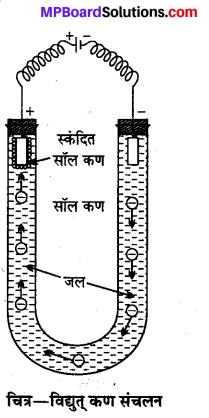
(ii) स्कन्दन (Coagulation)—कोलॉइड कण धनात्मक या ऋणात्मक विद्युत् आवेश युक्त होते हैं। यह देखा गया है कि कोलॉइड में उन पर आवेश से विरुद्ध आवेश वाले विद्युत्-अपघट्य उचित मात्रा में मिला दें तो उनका आवेश नष्ट हो जाता है और वे आपस में इकट्ठा होकर अवक्षेप बना देते हैं। कोलॉइडी कणों का विद्युत्-अपघट्यों द्वारा अवक्षेपित हो जाना स्कन्दन कहलाता है।
(iii) अपोहन (Dialysis)—कोलॉइडी विलयन से उसमें उपस्थित घुले हुए पदार्थों (क्रिस्टलाभों) को पार्चमेंट झिल्ली द्वारा निष्कासित करने की विधि अपोहन कहलाती है।
कोलॉइडी विलयन को पार्चमेण्ट पेपर से बने थैले में भरकर आसुत जल में लटका देते हैं। क्रिस्टलीय पदार्थ के कण थैले से बाहर निकलकर जल में वितरित हो जाते हैं, इस क्रिया को अपोहन कहते हैं।
(iv) टिण्डल प्रभाव (Tyndall Effect)—“यदि प्रकाश पुंज को कोलॉइडी विलयन में से गुजारा जाये तो प्रकाश मार्ग . एक चमकते हुए शंकु के रूप में दिखायी देता है। इसका अध्ययन सबसे पहले टिण्डल ने किया था अतः इसे टिण्डल प्रभाव व
कोलॉइडी चमकीले शंकु को टिण्डल शंकु कहते हैं।” टिण्डल ने यह बताया कि कोलॉइडी कण प्रकाश को बिखेर देते हैं जिसके
चित्र-टिण्डल प्रभाव कारण ये चमकने लगते हैं। प्रकाश का यह प्रकीर्णन साधारण प्रकीर्णन से भिन्न होता है। वास्तविक विलयन के कण अति सूक्ष्म आकार के कारण प्रकाश का प्रकीर्णन नहीं करते हैं जिससे उनमें प्रकाश का मार्ग अदृश्य रहता है। कोलॉइडी कण प्रकाश ऊर्जा को अवशोषित करके स्वयं दीप्त हो जाते हैं और फिर अवशोषित प्रकाश छोटी तरंगदैर्घ्य की किरणों के रूप में प्रकीर्णित होने लगता है। चूंकि अधिकतम प्रकीर्णन प्रकाश के मार्ग के लम्बवत् होता है इसलिए प्रकाश के मार्ग को समकोण पर देखने पर एक चमकीला शंकु दिखायी देता है।
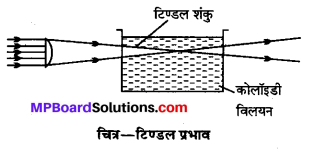
प्रश्न 24.
इमल्सनों (पायस) के चार उपयोग लिखिए।
उत्तर
पायसों के अनुप्रयोग –
- साबुन तथा अपमार्जकों की क्रियाविधि पायसीकरण पर आधारित है।
- औषधि के रूप में कॉड लिवर ऑयल, हैली बुट यकृत तेल आदि के रूप में पायस का उपयोग किया जाता है।
- संक्रमणहारी (Disinfectants) जैसे—फिनाइल, डेटॉल और लाइसॉल जल में मिलाने पर जल में तेल के समान पायस बनाते हैं।
- धातु अयस्क के सान्द्रण की झाग उत्प्लावन विधि भी पायसीकरण के सिद्धान्त पर आधारित है।
- वसा का आँतों द्वारा पाचन पायसीकरण के कारण सरलता से होता है।
प्रश्न 25.
मिसेल क्या है ? मिसेल निकाय का एक उदाहरण दीजिए।
उत्तर
बहुआण्विक, वृहत् आण्विक एवं संगुणित कोलॉइड में अंतर –
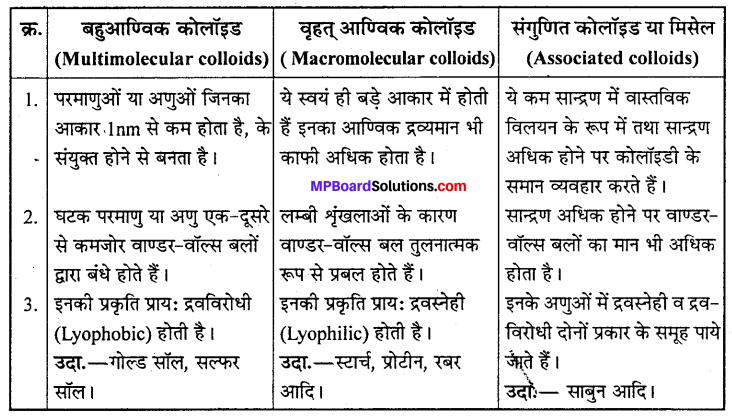
![]()
प्रश्न 26.
निम्न पदों को उचित उदाहरण सहित समझाइए –
(i) एल्कोसॉल
(ii) एरोसॉल
(iii) हाइड्रोसॉल।।
उत्तर
(i) एल्कोसॉल-एल्कोसॉल वह कोलॉइडी सॉल होता है जिसमें परिक्षेपण माध्यम ऐल्कोहॉल होता है। जैसे-बहुलक सॉल। .
(ii) ऐरोसॉल-कोलॉइडी का वह प्रक्रम जिसमें परिक्षेपण माध्यम वायु होती है। जैसे-धुआँ, धूल, कोहरा आदि।
(iii) हाइड्रोसॉल-वह कोलॉइडी प्रक्रम जिसमें परिक्षेपण माध्यम जल होता है। जैसे-स्टॉर्च, साबुन झाग आदि।
प्रश्न 27.
“कोलॉइड एक पदार्थ नहीं पदार्थ की एक अवस्था है। इस कथन पर टिप्पणी कीजिए।
उत्तर
दिया गया कथन यह है कि कोलॉइड एक पदार्थ नहीं पदार्थ की अवस्था है सत्य कथन है। क्योंकि कोई पदार्थ कुछ शर्तों पर कोलॉइड अवस्था ग्रहण करता है जबकि अन्य शर्तों पर वह क्रिस्टल के रूप में हो सकता है।
उदाहरण-जल में NaCl क्रिस्टलन की भाँति कार्य करता है और एक वास्तविक विलयन बनाता है, जबकि बेंजीन में कोलॉइड की भाँति व्यवहार करता है। इसी प्रकार साबुन कम सान्द्रता पर क्रिस्टल की भाँति व्यवहार करता है तथा उच्च सान्द्रता पर कोलॉइड की भाँति । अत: यह पदार्थ के आकार पर निर्भर करता है। यदि अवयव का आकार 1 nm से 100 nm के मध्य है तो यह कोलॉइडी अवस्था है। दूसरी ओर यदि अवयव का आकार 100 nm से अधिक है तो अवक्षेप के रूप में और यदि 1 nm से कम हो तब यह वास्तविक विलयन के रूप में व्यवहार करता है। इसलिए हम कह सकते हैं कि कोलॉइडी अवस्था वास्तविक विलयन और अवक्षेप के मध्य की अवस्था है।
पृष्ठ रसायन अन्य महत्वपूर्ण प्रश्नोत्तर
पृष्ठ रसायन वस्तुनिष्ठ प्रश्न
1. सही विकल्प चुनकर लिखिए –
प्रश्न 1.
सक्रिय चारकोल में ऐसीटिक अम्ल की अधिशोषण प्रक्रिया में ऐसीटिक अम्ल है –
(a) ऐडजॉर्बर (अवशोषक)
(b) ऐबजॉर्बर (अवशोष्य)
(c) ऐडजॉर्बेट (अधिशोषक)
(d) ऐडजॉर्बेट (अधिशोष्य)।
उत्तर
(d) ऐडजॉर्बेट (अधिशोष्य)।
![]()
प्रश्न 2.
द्रवविरोधी सॉल के स्थायित्व का कारण होता है –
(a) ब्राउनी गति
(b) टिण्डल प्रभाव
(c) विद्युत् आवेश
(d) ब्राउनी गति तथा विद्युत् आवेश।
उत्तर
(d) ब्राउनी गति तथा विद्युत् आवेश।
प्रश्न 3.
As2S3 कोलॉइडी विलयन को स्कंदित करने में निम्नलिखित में किसका स्कन्दन मान न्यूनतम
होगा
(a) NaCl
(b) KCI
(c) BaCl2
(d) AICI3
उत्तर
(d) AICI3
प्रश्न 4.
अधिशोषण क्रिया है –
(a) ऊष्माशोषी
(b) ऊष्माक्षेपी
(c) ऊष्मा का परिवर्तन नहीं होता
(d) इनमें से कोई नहीं।
उत्तर
(b) ऊष्माक्षेपी
प्रश्न 5.
कोलॉइडी कणों का आकार होता है –
(a) 10-7 – 10-9सेमी के मध्य
(b) 10-7 – 10-11 सेमी के मध्य
(c) 10-5 – 10-7 सेमी के मध्य
(d) 10-2 – 10-3 सेमी के मध्य ।
उत्तर
(c) 10-5 – 10-7 सेमी के मध्य
प्रश्न 6.
निम्न में से किसका प्रयोग द्रवस्नेही कोलॉइड बनाने में नहीं होता है –
(a) स्टार्च
(b) गोन्द
(c) जिलेटिन
(d) धातु सल्फाइड।
उत्तर
(d) धातु सल्फाइड।
प्रश्न 7.
रक्षी कोलॉइड की तरह कार्य करने वाला सॉल है –
(a) AS2S3
(b) जिलेटिन
(c)Au
(d) Fe (OH)3.
उत्तर
(b) जिलेटिन
प्रश्न 8.
कोहरा (Fog) एक कोलॉइडी तंत्र का उदाहरण है –
(a) गैस में परिक्षिप्त द्रव
(b) गैस में गैस का परिक्षेपण
(c) ठोस का गैस में परिक्षेपण
(d) ठोस का द्रव में परिक्षेपण।
उत्तर
(a) गैस में परिक्षिप्त द्रव
![]()
प्रश्न 9.
जिलेटिन का उपयोग बहुधा आइसक्रीम बनाने में होता है क्योंकि यह
(a) कोलॉइडी विलयन बनने से रोकता है
(b) खुशबू बढ़ाता है
(c) क्रिस्टलन होने से रोकता है एवं मिश्रण को स्थायित्व प्रदान करता है
(d) स्वाद बढ़ाता है।
उत्तर
(c) क्रिस्टलन होने से रोकता है एवं मिश्रण को स्थायित्व प्रदान करता है
प्रश्न 10.
अभिक्रिया

(a) स्व-उत्प्रेरक
(b) विष
(c) ऋणात्मक उत्प्रेरक
(d) धन उत्प्रेरक। .
उत्तर
(b) विष
प्रश्न 11.
कोलॉइडी कणों का अभिगमन विद्युत् क्षेत्र के प्रभाव द्वारा होने का नाम है –
(a) धन-कण संचलन
(b) अपोहन
(c) वैद्युत-कण संचलन
(d) विद्युत् परिक्षेपण।
उत्तर
(c) वैद्युत-कण संचलन
प्रश्न 12.
हार्डी-शूल्जे नियम सम्बन्धित है
(a) विलयन से
(b) स्कन्दन से
(c) ठोसों से
(d) गैसों से।
उत्तर
(b) स्कन्दन से
प्रश्न 13.
कोलॉइडी विलयन में कितनी अवस्थाएँ पायी जाती हैं –
(a) 1
(b) 2
(c) 3
(d) 4.
उत्तर
(b) 2
![]()
प्रश्न 14.
निम्नलिखित में से पायस है –
(a) मक्खन
(b) वायु
(c) लकड़ी
(d) दूध।
उत्तर
(d) दूध।
प्रश्न 15.
मक्खन एक है –
(a) जेल
(b) पायस
(c) सॉल
(d) कोलॉइड।
उत्तर
(a) जेल
प्रश्न 16.
ब्राउनी गति का कारण है –
(a) कोलॉइडी कणों तथा विकिरण माध्यम के अणुओं के बीच आकर्षण बल
(b) संवहन धाराएँ
(c) परिक्षेपण माध्यम के अणुओं का कोलॉइडी कणों पर प्रहार
(d) द्रव अवस्था में ऊष्मा परिवर्तन।
उत्तर
(c) परिक्षेपण माध्यम के अणुओं का कोलॉइडी कणों पर प्रहार
प्रश्न 17.
रक्षी कोलॉइड की तरह कार्य करने वाला सॉल है –
(a) जिलेटिन
(b) Au
(c) Fe(OH)2
(d) As2S3.
उत्तर
(a) जिलेटिन
प्रश्न 18.
निम्नलिखित में से कौन-सा भौतिक अधिशोषण के लिए गलत कथन है
(a) यह एक उत्क्रमणीय प्रक्रम है
(b) इसे कम अधिशोषण की ऊष्मा की आवश्यकता होती है
(c) इसे सक्रियण ऊर्जा की आवश्यकता होती है
(d) यह कम ताप पर होता है।
उत्तर
(c) इसे सक्रियण ऊर्जा की आवश्यकता होती है
प्रश्न 19.
निम्न में से किसमें टिण्डल प्रभाव नहीं है
(a) निलम्बन
(b) पायस
(c) शर्करा विलयन
(d) स्वर्ण सॉल।
उत्तर
(c) शर्करा विलयन
2. रिक्त स्थानों की पूर्ति कीजिए –
- भौतिक अधिशोषण की दर ताप बढ़ाने के साथ ………….. है।
- As2S3के सॉल के कणों में …………… होता है।
- सम्पर्क विधि द्वारा H2SO4 के निर्माण में ………….. Pt उत्प्रेरक के लिए ………..का कार्य करता है।
- KMnO4 द्वारा ऑक्जेलिक अम्ल का ऑक्सीकरण …………….का उदाहरण है।
- जैविक उत्प्रेरक आवश्यक रूप से …………….. होता है।
- वैद्युत क्षेत्र के प्रभाव में कोलॉइडी कणों की गति ……………. कहलाती है।
- कोलॉइडी कणों द्वारा प्रकाश का प्रकीर्णन …………… प्रभाव कहलाता है।
- माध्यमिक यौगिक सिद्धान्त ……………. उत्प्रेरकों के लिए लागू होता है।
- जिस पदार्थ की सतह पर अधिशोषण होता है, उसे … ……… कहते हैं।
- दूध एक ……………. का उदाहरण है।
- रक्त एक …………… आवेशित सॉल है।
- अधिशोषण एक ………….. प्रक्रिया है।
- द्रव का ठोस में कोलॉइडी विलयन …………….. कहलाता है।
- उत्प्रेरक वर्धक पदार्थ ………………… है।
- विद्युत्-अपघट्य मिलाने से कोलॉइडी कणों का अवक्षेपण … कहलाता है।
- हार्डी-शुल्जे नियम के अनुसार, आयनों की स्कन्दन क्षमता आयनों की ……………….. पर निर्भर करती है।
उत्तर
- घटती
- ऋणावेश
- As2O3
- विष,
- स्व-उत्प्रेरण,
- ‘एन्जाइम,
- धन-कण संचलन,
- टिण्डल प्रभाव,
- समांगी,
- अधिशोषक,
- पायस,
- ऋणात्मक,
- ऊष्माक्षेपी,
- जेल,
- मॉलिब्डेनम,
- स्कंदन,
- आवेश संख्या।
3. उचित संबंध जोड़िए –
I.
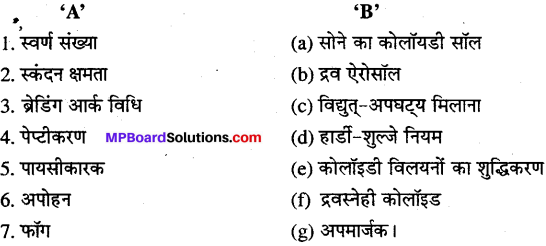
उत्तर
1. (1), 2. (d), 3. (a), 4. (c), 5. (g), 6. (e), 7. (b).
![]()
II.
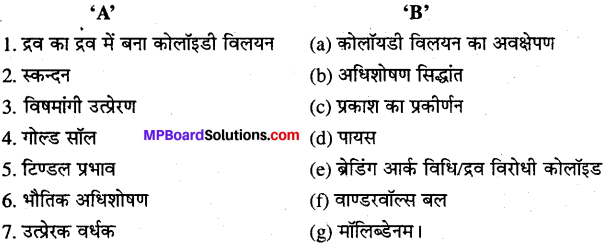
उत्तर
1. (d), 2. (a), 3. (b), 4. (e), 5. (c), 6. (1), 7. (g).
4. एक शब्द/वाक्य में उत्तर दीजिए –
- क्या होता है, जब गोल्ड के कोलॉइडी विलयन में जिलेटिन मिलाया जाता है ?
- वे पदार्थ जो उत्प्रेरक के उत्प्रेरण शक्ति को बढ़ा देते हैं लेकिन स्वयं उत्प्रेरक का कार्य नहीं करते वे – कहलाते हैं।
- किसी पायस का अपने अवयवी द्रवों में विघटित हो जाना कहलाता है।
- तेलों के हाइड्रोजनीकरण में प्रयुक्त किये जाने वाले उत्प्रेरक का नाम लिखिए।
- H2O2 के अपघटन में फॉस्फोरिक अम्ल किस प्रकार के उत्प्रेरक का कार्य करता है ?
- ग्लूकोज को ऐल्कोहॉल में बदलने के लिए प्रयुक्त किये जाने वाले उत्प्रेरक का नाम लिखिए।
- Na+, Ba2+, Al3+, Sn4+ आयनों में से किसकी स्कंदन शक्ति सर्वाधिक होगी?
- Cl2 गैस मास्क का उपयोग किस सिद्धांत पर आधारित है ?
- किसी अवक्षेप को कोलॉइडी कणों में बदलना क्या कहलाता है ?
- साबुन की प्रक्षालन क्रिया किस सिद्धांत पर आधारित है ?
- उत्प्रेरण शब्द का प्रथम बार प्रयोग किसने किया था ?
- कोलॉइडी कणों का आकार लिखिए।
- KMnO4 द्वारा ऑक्जेलिक अम्ल के ऑक्सीकरण में प्रयुक्त उत्प्रेरक की प्रकृति लिखिए।
- उत्प्रेरक विष का एक उदाहरण दीजिए।
- कोलॉइडी कणों की गति को क्या कहते हैं ?
- शर्करा का जल-अपघटन करने के लिए कौन-से उत्प्रेरक का प्रयोग किया जाता है ?
उत्तर
- रक्षण
- उत्प्रेरक वर्धक
- विपायसीकरण
- निकिल
- ऋणात्मक
- जाइमेस
- Sn4+
- अधिशोषण
- पेप्टीकरण
- पायसीकरण
- वर्जीलिथिम
- 10-5 सेमी से 10-7 सेमी, “
- स्व-उत्प्रेरक,
- H2SO4 बनाने की संपर्क विधि में Al2O3,
- ब्राउनी गति,
- इन्वर्टेज ।
पृष्ठ रसायन अति लघु उत्तरीय प्रश्न
प्रश्न 1.
कौन-सी अक्रिय गैस चारकोल की सतह पर
(i) सबसे कम मात्रा में
(ii) सबसे ज्यादा मात्रा में अधिशोषित होगी और क्यों ?
उत्तर
(i) हीलियम अपने कम आण्विक द्रव्यमान एवं अणुओं के बीच न्यूनतम वाण्डर वॉल्स बल के कारण चारकोल की सतह पर सबसे कम मात्रा में अधिशोषित होगी।
(ii) जीनॉन अपने उच्च आण्विक द्रव्यमान एवं अणुओं के बीच अधिकतम वाण्डर वॉल्स बल के कारण चारकोल की सतह पर सबसे ज्यादा अधिशोषित होगी।
प्रश्न 2.
आकाश का रंग नीला क्यों दिखाई देता है ?
उत्तर
वायुमण्डल में उपस्थित धूल के कण एक कोलॉइडी विलयन का निर्माण करते हैं । इन धूल के कोलॉइडी कणों द्वारा प्रकाश का प्रकीर्णन (टिण्डल प्रभाव) के कारण आकाश का रंग नीला दिखाई देता है।
![]()
प्रश्न 3.
ऑक्जेलिक अम्ल में KMnO4 मिलाने से उसका रंग पहले धीरे-धीरे विलुप्त होता है किन्तु बाद में तेजी से गायब होने लगता है, क्यों?
उत्तर
ऑक्जेलिक अम्ल में KMnO4 मिलाने पर ऑक्जेलिक अम्ल का ऑक्सीकरण होता है। इस अभिक्रिया में बनने वाला Mn2+ आयन स्व-उत्प्रेरक का कार्य करता है जिससे अभिक्रिया तेजी से होने लगती है और KMnO4 का रंग तेजी से विलुप्त होने लगता है।
2MnO–4 +5C2O––4 + 16H+ → 2Mn+2 + 10CO2 + 8H2O
प्रश्न 4.
कोलॉइडी विलयन के बारे में लिखिए।
उत्तर
कोलॉइडी विलयन के कणों का आकार वास्तविक विलयन से बड़ा तथा निलंबन से छोटा होता है। यह एक विषमांग मिश्रण है जिसमें परिक्षिप्त प्रावस्था के कणों का आकार 10-5 से 10-7 cm के बीच एवं परिक्षेपण माध्यम के कणों का आकार लगभग 10-7cm होता है। उदाहरण-कोहरा, रक्त, धुंआ।
प्रश्न 5.
अधिशोषक किसे कहते हैं ? दो उदाहरण दीजिए।
उत्तर
अधिशोषक-अधिशोषक ठोस जो गैस, वाष्प या किसी विलयन में विलेय को अधिशोषित करते हैं, अधिशोषक कहलाते हैं।
उदाहरण-जन्तु चारकोल, सिलिका इत्यादि।
प्रश्न 6.
अधिशोष्य क्या है ?
उत्तर
गैस या वाष्प या विलेय के अणु जो ठोस की सतह पर अधिशोषित होते हैं, अधिशोष्य कहलाते हैं।
प्रश्न 7.
नदियों के समुद्र में मिलने से डेल्टा बनता है। समझाइए।।
उत्तर
नदियों के जल में मिट्टी के ऋण आवेशित कण होते हैं, जो समुद्र के जल में उपस्थित Na+ , K+ या Mg+2 आयनों से स्कन्दित हो जाते हैं, जिससे डेल्टा का निर्माण होता है।
प्रश्न 8.
बादलों पर सिल्वर आयोडाइड का स्प्रे करने पर वर्षा का होना कैसे संभव है ?
उत्तर
बादलों की प्रकृति कोलॉइडी होने के कारण इन पर आवेश होता है। सिल्वर आयोडाइड एक वैद्युत-अपघट्य है बादलों पर इसका स्प्रे करने के परिणामस्वरूप स्कंदन होता है, जिससे वर्षा होती है।
प्रश्न 9.
किसी गैस का अधिशोषण क्रान्तिक ताप से किस प्रकार संबंधित है ?
उत्तर
किसी गैस के लिये क्रान्तिक ताप उच्च होने पर उसका द्रवीकरण उतना ही आसान होता है एवं उसके अणुओं के बीच में उच्च वाण्डर वॉल्स आकर्षण बल लगता है। फलस्वरूप ऐसी गैसों का अधिशोषण उच्च मात्रा में होता है।
![]()
प्रश्न 10.
क्या होता है, जब ताजे अवक्षेपित Fe(OH)3 को थोड़े से तनु FeCl3 विलयन के साथ हिलाया जाता है ?
उत्तर
ताजे अवक्षेपित Fe(OH)3 को तनु FeCl3 विलयन के साथ हिलाने पर Fe(OH)3 लाल-भूरे रंग के कोलॉइडी विलयन में परिवर्तित हो जाता है। इस प्रक्रम को पेप्टीकरण कहते हैं। इसमें FeCl3 विलयन से प्राप्त Fe+3 आयन Fe(OH)3 अवक्षेप के कणों पर अधिशोषित होकर धनावेशित कोलॉइडी विलयन बनाते हैं।
पृष्ठ रसायन लघु उत्तरीय प्रश्न
प्रश्न 1.
कोलॉइडी विलयन किसे कहते हैं ? डायलिसिस क्या है ? इसका सामान्य सिद्धान्त क्या है?
उत्तर
वे विलयन जिनमें विलेय के कणों का व्यास 10-4 सेमी से 10-7 सेमी होता है तथा विलायक के कणों का व्यास 10-7 सेमी से 10-8 सेमी होता है, कोलॉइडी विलयन कहलाते हैं। इस प्रकार के विलयन आँख से देखने पर समांग दिखाई देते हैं जबकि सूक्ष्मदर्शी द्वारा देखने पर समांग नहीं दिखायी देते हैं।
प्रश्न 2.
सॉल, जेल और पायस को उदाहरण सहित स्पष्ट कीजिए।
उत्तर
सॉल (Sol)—जब कोई ठोस पदार्थ किसी द्रव में परिक्षिप्त (disperse) होकर कोलॉइडी विलयन बनाता है तो वह सॉल कहलाता है। जैसे—फेरिक हाइड्रॉक्साइड, गोल्ड आदि के जल में बने कोलॉइडी विलयन।
जेल (Gel)—जब कोई द्रव किसी ठोस में परिक्षेपित होकर कोलॉइडी विलयन बनाता है तब इसे जेल कहते हैं। उदाहरणार्थ-जेली, पनीर, मक्खन आदि।
पायस (Emulsion)—जब एक द्रव दूसरे अमिश्रणीय द्रव में परिक्षेपित कोलॉइडी विलयन बनाता है तब इसे पायस कहते हैं। जैसे—क्रीम, दूध आदि।
प्रश्न 3.
समांगी तथा विषमांगी उत्प्रेरण को उदाहरण देकर समझाइए।
उत्तर
समांगी उत्प्रेरण–वे रासायनिक अभिक्रियाएँ जिनमें क्रियाकारक पदार्थ और उत्प्रेरक एक ही प्रावस्था में हों, समांगी उत्प्रेरण अभिक्रियाएँ कहलाती हैं।

विषमांगी उत्प्रेरण—जब क्रियाकारक पदार्थ और उत्प्रेरक की प्रावस्थाएँ अलग-अलग हों, तो ऐसे उत्प्रेरण विषमांगी उत्प्रेरण कहलाते हैं।
अमोनिया निर्माण की हैबर विधि में,

प्रश्न 4.
स्वर्ण संख्या किसे कहते हैं ? उदाहरण सहित स्पष्ट कीजिए।
उत्तर
स्वर्ण संख्या-जिगमोण्डी ने आपेक्षिक रक्षण शक्ति ज्ञात करने के लिए एक संख्या निर्धारित की जो स्वर्ण संख्या (Gold Number) कहलाती है। इसके अनुसार
“यह मिलीग्रामों में रक्षी कोलॉइडों की वह मात्रा है, जो दिये हुए स्वर्ण कोलॉइडी विलयन में 10 मिलीलीटर में उपस्थित होने पर उसका एक मिलीलीटर 10% NaCl विलयन द्वारा स्कन्दन होने से रोकती है।” स्वर्ण संख्या अधिक होने पर रक्षण शक्ति कम होती है।
जिलेटिन की रक्षण शक्ति सर्वाधिक एवं डेक्सट्रीन की रक्षण शक्ति सबसे कम होती है।
![]()
प्रश्न 5.
पायसीकरण में पायसीकारक का क्या महत्त्व है ? ।
उत्तर
पायस बनाने की क्रिया पायसीकरण कहलाती है। उपयुक्त द्रवों को मिलाकर तेजी से हिलाने पर पायस बनते हैं परन्तु इस प्रकार से बना हुआ पायस स्थायी नहीं होता। पायस को स्थायी बनाने के लिए एक तीसरे पदार्थ को,मिलाना अनिवार्य है जिसे पायसीकारक कहते हैं। साबुन, गोंद, स्टार्च आदि पायसीकारक का कार्य करते हैं। पायसीकारक की अनुपस्थिति में द्रव की परिक्षिप्त बूंदें आपस में मिल जाने से पायस नष्ट हो जाता है।
प्रश्न 6.
अधिशोषण क्या है ? इसके दो उदाहरण तथा इसकी क्रियाविधि समझाइए।
उत्तर
जब गैस या द्रव के अणु किसी वृहत क्षेत्रफल वाले ठोस के सम्पर्क में आते हैं तो कभी-कभी गैस या द्रव के अणुओं की ठोस की सतह पर सान्द्रता बढ़ जाती है। इस घटना को अधिशोषण कहते हैं।
अधिशोषण के उदाहरण – (i) चीनी उद्योग में जन्तु चारकोल रंगीन पदार्थों का अधिशोषण कर लेता है।
(ii) परम्यूटिट विधि में Ca2+,Mg2+ आयन अधिशोषित हो जाते हैं तथा Na+ आयन मुक्त हो जाते हैं जिससे जल की कठोरता दूर हो जाती है।
अधिशोषण की क्रियाविधि – ठोस के पृष्ठ पर उपस्थित परमाणुओं या अणुओं में मुक्त संयोजकताएँ रहती हैं। ये मुक्त संयोजकताएँ अधिशोष्य अणुओं को अपनी ओर आकर्षित करती हैं।
प्रश्न 7.
विद्युत्-अपोहन पर एक टिप्पणी लिखिए।
उत्तर
विद्युत्-अपोहन (Electro-dialysis) यदि कोलॉइडी विलयन में वैद्युत-अपघटन की अशुद्धियाँ होती हैं तो अपोहन की दर बढ़ाने के लिए द्रोणिका में दो विपरीत आवेश के इलेक्ट्रोड लगाये जाते हैं। आयनिक अशुद्धियाँ विपरीत आवेश के इलेक्ट्रोड की ओर तेजी से गति करती हैं। इस विधि को विद्युत्-अपोहन (Electro-dialysis) कहते हैं।
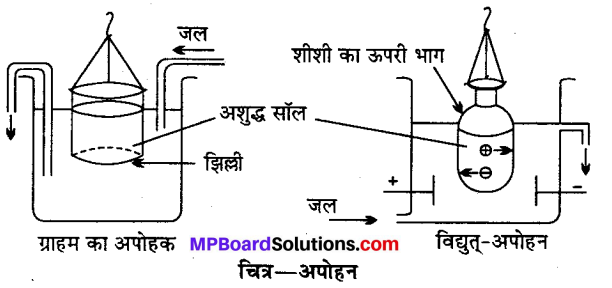
प्रश्न 8.
रक्षी कोलॉइड किसे कहते हैं ?
उत्तर
रक्षी कोलॉइड-द्रव-विरोधी कोलॉइडी विलयन में थोड़ा-सा विद्युत्-अपघट्य मिलाने पर उसका स्कन्दन शीघ्र ही हो जाता है, परन्तु यदि विद्युत्-अपघट्य मिलाने से पहले द्रव विरोधी कोलॉइडों में कोई जल-स्नेही कोलॉइड जैसे—जिलेटिन, अगर-अगर, ऐल्ब्यूमिन आदि की थोड़ी-सी मात्रा मिला दी जाय तो विद्युत्-अपघट्य का प्रभाव बहुत कम हो जाता है और स्कन्दन बहुत धीमा हो जाता है या बिल्कुल नहीं होता। इस घटना को कोलॉइडी रक्षण कहते हैं तथा रक्षण के लिए मिलाये गये जल-स्नेही कोलॉइड को रक्षी कोलॉइड (Protective colloid) कहते हैं।
उदाहरण—किसी सोडियम सॉल में थोड़ा जिलेटिन मिला देने पर सोडियम क्लोराइड विलयन द्वारा उसका स्कन्दन नहीं होता।
प्रश्न 9.
फेरिक हाइड्रॉक्साइड एवं सल्फर की जल में कोलॉइडी विलयन बनाने की विधि दीजिए।
उत्तर
फेरिक हाइड्रॉक्साइड का सॉल बनाने के लिए FeCl3 विलयन को उबलते जल में बूंद-बूंद करके हिलाते हुए डालते हैं। FeCI3 की अतिरिक्त मात्रा व HCl को विद्युत्-अपोहन द्वारा पृथक् कर देते हैं जिससे विलयन स्थायी रह सके।
FeCl3 +3H2O → Fe(OH)3 +3HCl
नाइट्रिक अम्ल (ऑक्सीकारक) के विलयन में H,S गैस प्रवाहित करने पर सल्फर कोलॉइडी विलयन बनता है।
2HNO3 +H2S → S+2H2O+2NO2
![]()
प्रश्न 10.
भौतिक अधिशोषण और रासायनिक अधिशोषण को समझाइए।
उत्तर:
यदि अधिशोष्य, अधिशोषक की सतह पर अत्यन्त दुर्बल वाण्डरवाल्स आकर्षण बल द्वारा बँधा रहता है तो उस अधिशोषण प्रक्रम को भौतिक अधिशोषण (Physical Adsorption or Physisorption) कहते हैं । यदि अधिशोष्य को बाँधे रहने वाले बल रासायनिक बन्ध में कार्य करने वाले बल के समान ही प्रबल हों तो इस प्रकार के अधिशोषण को रासायनिक अधिशोषण (Chemical Adsorption or Chemisorption) कहते हैं। रासायनिक अधिशोषण में अधिशोष्य के अणु अधिशोषक के पृष्ठ-तल पर रासायनिक बन्ध द्वारा जुड़े रहते हैं। अधिशोषण प्रक्रम में सामान्यतः ऊर्जा मुक्त होती है अतः यह एक ऊष्माक्षेपी प्रक्रम है।
प्रश्न 11.
अधिशोषण की एन्थैल्पी से आप क्या समझते हैं ?
उत्तर
अधिशोषण की एन्थैल्पी (Enthalpy of Adsorption) या अधिशोषण ऊष्मा (Heat of Adsorption)— “अधिशोषण प्रक्रम में एक मोल अधिशोष्य के अधिशोषक सतह पर अधिशोषण होने पर होने वाला एन्थैल्पी परिवर्तन अधिशोषण की एन्थैल्पी या अधिशोषण ऊष्मा कहलाता है।”
रासायनिक अधिशोषण की अधिशोषण ऊष्मा का मान भौतिक अधिशोषण की अधिशोषण ऊष्मा के मान से अधिक होता है। रासायनिक अधिशोषणों के लिए अधिशोषण ऊष्मा का मान लगभग 400 kJ per mol तथा भौतिक अधिशोषणों के लिए अधिशोषण ऊष्मा का मान लगभग 40 kJ per mol होता है।
प्रश्न 12.
उत्प्रेरण क्या है ? प्रेरित उत्प्रेरण के एक उदाहरण देकर समझाइए।
उत्तर
वह पदार्थ जो अपनी उपस्थिति मात्र से किसी रासायनिक क्रिया के वेग को घटा या बढ़ा देता है और स्वयं क्रिया के अन्त में भार व रासायनिक संघटन की दृष्टि से अपरिवर्तित रहता है, उत्प्रेरक कहलाता है तथा इस प्रकार की क्रिया उत्प्रेरण (Catalysis) कहलाती है।
उदाहरण – H2O2 अपघटित होकर सरलता से H2O व O2 देता है किन्तु फॉस्फोरिक अम्ल की उपस्थिति में अपघटन की क्रिया मन्द हो जाती है। यह वेग को घटाता है।
प्रेरित या उपपादित उत्प्रेरण (Induced catalysis)-जब कोई एक रासायनिक अभिक्रिया दूसरी रासायनिक अभिक्रिया के लिए उत्प्रेरक का कार्य करती है तो पहली अभिक्रिया प्रेरित उत्प्रेरक कहलाती है। इस घटना को प्रेरित उत्प्रेरण कहते हैं।
उदाहरण-सोडियम सल्फाइट वायु में रखने से ऑक्सीकृत हो जाता है परन्तु सोडियम आर्सेनाइट वायु में ऑक्सीकृत नहीं होता। सोडियम सल्फाइट और सोडियम आर्सेनाइट को मिलाकर हवा में रखने पर दोनों का ऑक्सीकरण हो जाता है।
![]()
प्रश्न 13.
धनात्मक एवं ऋणात्मक उत्प्रेरण को उदाहरण देकर स्पष्ट कीजिए।
उत्तर
धनात्मक उत्प्रेरण—जब उत्प्रेरक रासायनिक क्रिया के वेग को बढ़ाता है, तो उसे धनात्मक उत्प्रेरक तथा इस प्रक्रम को धनात्मक उत्प्रेरण कहते हैं।

यहाँ आयरन चूर्ण एक धनात्मक उत्प्रेरक का कार्य करता है।
ऋणात्मक उत्प्रेरण—जब कोई उत्प्रेरक रासायनिक अभिक्रिया की गति को कम कर देता है, तो उसे ऋणात्मक उत्प्रेरक तथा इस प्रक्रम को ऋणात्मक उत्प्रेरण कहते हैं।

फॉस्फोरिक अम्ल यहाँ ऋणात्मक उत्प्रेरक का कार्य करता है।
प्रश्न 14.
पेप्टीकरण की क्रिया को सचित्र समझाइए।
उत्तर
पेप्टीकरण (Peptisation)-इस विधि में जिस पदार्थ का कोलॉइडी विलयन बनाना है उसका ताजा अवक्षेप लेते हैं। इस अवक्षेप में एक अन्य उपयुक्त अभिकर्मक मिलाते हैं जो पेप्टीकारक कहलाता है। यह पेप्टीकारक बहुधा समान आयन (common ion) वाले विद्युत्-अपघट्य का तनु विलयन होता है। पेप्टीकरण स्कन्दन । का विपरीत है। उदाहरण—ऐल्युमिनियम हाइड्रॉक्साइड के कोलॉइडी कण के ताजे अवक्षेप को कुछ तनु HCl मिले जल के साथ उबालने से AI(OH)3 का कोलॉइडी विलयन प्राप्त होता है।
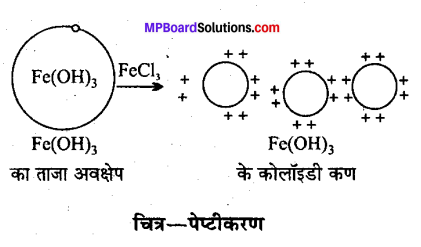
जब किसी ताजे अवक्षेपित पदार्थ में विद्युत्-अपघट्य मिलाते हैं तो अवक्षेप के कण विद्युत्-अपघट्य के किसी एक आयन को वर्णात्मक अधिशोषण (preferential adsorption) करके स्थिर विद्युतीय प्रतिकर्षण (electrostatic repulsion) के कारण कोलॉइडी अवस्था में चले जाते हैं । इसे फेरिक हाइड्रॉक्साइड के अवक्षेप में विद्युत्-अपघट्य फेरिक क्लोराइड मिलाने पर प्राप्त फेरिक हाइड्रॉक्साइड सॉल के द्वारा समझा सकते हैं।
प्रश्न 15.
कोलॉइडी कणों पर विद्युतीय आवेश की उत्पत्ति की विवेचना कीजिए।
उत्तर
कोलॉइडी कणों पर विद्युत्-आवेश होता है। किसी कोलॉइडी विलयन में उपस्थित सभी कोलॉइडी कणों पर समान आवेश होता है। प्रतिकर्षण के कारण समान आवेश कणों को परिक्षिप्त प्रावस्था में रखता है। कोलॉइडी कणों पर विद्युतीय आवेश की उत्पत्ति निम्नलिखित कारणों से होती है –
- घर्षण द्वारा आवेश की उत्पत्ति—परिक्षेपण माध्यम और परिक्षिप्त प्रावस्था में परस्पर घर्षण के कारण कणों पर आवेश की उत्पत्ति होती है।
- सतह के समूहों के आयनीकरण द्वारा–कोलॉइडी कणों पर आवेश पृष्ठ पर उपस्थित समूहों के आयनीकरण से उत्पन्न होता है, ये समूह या तो कोलॉइडी पदार्थों के कण हो सकते हैं अथवा स्कंदन रोकने हेतु मिलाया गया कोई विद्युत्-अपघट्य हो सकता है।
- वैद्युत् द्विपरत सिद्धान्त (Electric Double Layer Theory)—इस धारणा के अनुसार कोलॉइडी कणों पर आवेश की द्वि-स्तर परत होती है। एक परत अधिशोषित आयनों की होती है और दूसरी परत परिक्षेपण माध्यम में विपरीत आवेश वाले आयनों की होती है जिसे विसरित परत (diffused layer) कहते हैं।
प्रश्न 16.
कारण स्पष्ट कीजिए –
(i) दूध में खटाई डालने पर वह फट जाता है।
(ii) जल को साफ करने के लिए फिटकरी मिलाते हैं।
(iii) जहाँ नदी अपना पानी समुद्र में मिलाती है वहाँ डेल्टा बन जाता है।
उत्तर
(i) दूध वसा का जल में पायस है जिसमें ऐल्ब्यूमिन तथा केसिन पायसीकारक हैं, जब इसमें खटाई मिलाई जाती है तो उसका स्कन्दन हो जाता है और थक्का जम जाता है। इस प्रकार दूध में खटाई डालने पर वह फट जाता है।
(ii) अशुद्ध जल में मिट्टी के कण, बैक्टीरिया तथा अन्य विलेय अशुद्धियाँ रहती हैं। उनमें ऋण आवेश रहता है। अशुद्ध जल को टंकियों में लेकर उसमें फिटकरी मिलाते हैं। फिटकरी में Al3+ आयन अशुद्धि के ऋण आवेश को नष्ट कर देते हैं। इससे अशुद्धियाँ स्कन्दित होकर नीचे बैठ जाती हैं।
(iii) नदियों के जल में मिट्टी तथा रेत के ऋणावेशित कोलॉइडी कण पाये जाते हैं । जब नदी का जल समुद्र में मिलता है तो समुद्र के जल में पाये जाने वाले अनेक लवणों की स्कन्दन क्रिया के फलस्वरूप मिट्टी आदि के कण नदी के मुहाने पर नीचे एकत्रित होते रहते हैं तथा डेल्टा का निर्माण धीरे-धीरे हो जाता है।
![]()
प्रश्न.17.
उत्प्रेरकों के पाँच गुणधर्म लिखिए।
उत्तर
उत्प्रेरकों के गुणधर्म –
- रासायनिक क्रिया के फलस्वरूप उत्प्रेरकों के अन्य मान व रासायनिक संघटन पर कोई प्रभाव नहीं पड़ता केवल भौतिक अवस्था में कुछ परिवर्तन हो सकता है।
- उत्प्रेरक की रासायनिक अभिक्रिया में सूक्ष्म मात्रा की ही आवश्यकता होती है।
- उत्प्रेरक किसी अभिक्रिया को प्रारम्भ नहीं करते बल्कि ये अभिक्रिया के वेग को प्रभावित करते हैं।
- उत्प्रेरक किसी रासायनिक अभिक्रिया के साम्य को प्रभावित नहीं करते क्योंकि ये अग्र व प्रतीप दोनों अभिक्रियाओं को समान ढंग से प्रभावित करते हैं।
- उत्प्रेरक विशिष्ट स्वभाव युक्त होते हैं। अलग-अलग अभिक्रियाओं के लिये अलग-अलग उत्प्रेरक प्रयुक्त होते हैं । उत्प्रेरक किसी निश्चित अनुकूल ताप पर सर्वाधिक प्रभावी होते हैं । इस ताप से कम तथा अधिक ताप होने पर उत्प्रेरक की क्रियाशीलता प्रभावित होती है।
प्रश्न 18.
रंगीन काँच, धुआँ, दूध, क्रीम, कोहरा, जेली, झाँबा पत्थर, साबुन का झाग, कौन-से कोलॉइडी तन्त्र के उदाहरण हैं, उनके नाम लिखिए।
उत्तर

प्रश्न 19.
वास्तविक विलयन, कोलॉइडी विलयन एवं निलम्बन में विभेद कीजिए। · उत्तरवास्तविक विलयन (Real Solution), कोलॉइडी विलयन (Colloidal Solution) एवं निलम्बन (Suspension) में विभेद –
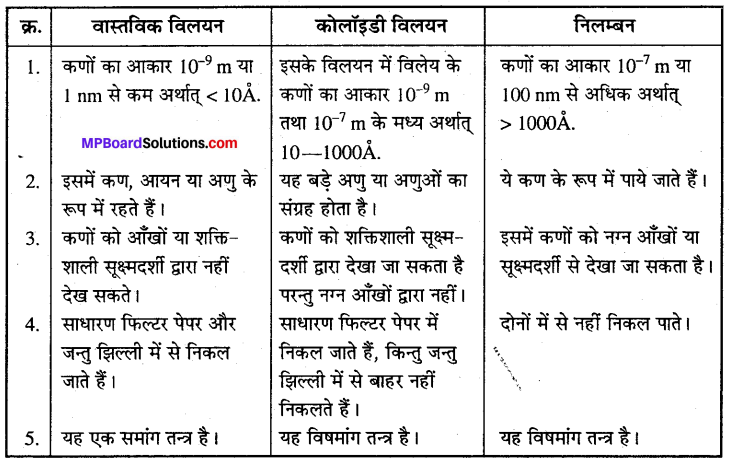
प्रश्न 20.
अधिशोषक के सक्रियण से आप क्या समझते हैं ? यह कैसे प्राप्त किया जाता है ?
उत्तर
अधिशोषक के सक्रियण का अर्थ है, अधिशोषक की अधिशोषण शक्ति को बढ़ाना। यह अधिशोषक के पृष्ठीय क्षेत्रफल को बढ़ाकर किया जा सकता है जिसे निम्न प्रकार प्राप्त किया जा सकता है –
- अधिशोषित गैसों को हटाकर अर्थात् लकड़ी के चारकोल को निर्वात में या अति उच्च तापीय भाप में 650 K से 1330 K ताप के मध्य गर्म करके सक्रिय किया जा सकता है।
- अधिशोषक को छोटे टुकड़ों में तोड़कर।
- अधिशोषक के पृष्ठ को रफ (ऊबड़-खाबड़) बनाकर।
![]()
प्रश्न 21.
विषमांगी उत्प्रेरण में, अधिशोषक की क्या भूमिका है ?
उत्तर
सामान्यतः विषमांगी उत्प्रेरण में, अभिक्रियक गैसीय जबकि उत्प्रेरक ठोस अवस्था में होते हैं। अभिक्रियक अणुओं का ठोस उत्प्रेरक के पृष्ठ पर भौतिक या रासायनिक अधिशोषण द्वारा अधिशोषित हो जाता है। अभिक्रियत अणुओं की सान्द्रता बढ़ने से या ठोस उत्प्रेरक के पृष्ठ पर अभिक्रियक अणुओं के टूटकर स्पीशीज बनने से जोकि तीव्रता से अभिक्रिया करती है, अभिक्रिया की गति बढ़ जाती है। उत्पाद अणुओं का विशोषण हो जाता है और अब उत्प्रेरक सतह दोबारा अधिक अभिक्रियक अणुओं को अधिशोषित करने के लिए उपलब्ध हो जाती है। यह सिद्धान्त विषमांगी उत्प्रेरण का अधिशोषण कहलाता है।
पृष्ठ रसायन दीर्घ उत्तरीय प्रश्न
प्रश्न 1.
निम्नलिखित पर संक्षिप्त टिप्पणियाँ लिखिए – (i) ब्राउनी गति, (ii) स्व-उत्प्रेरण।
उत्तर
(i) ब्राउनी गति (Brownian Movement)-कोलॉइडी विलयन का सूक्ष्मदर्शी से निरीक्षण करने पर ज्ञात होता है कि कोलॉइडी कण सदैव टेढ़े-मेढ़े (Zig-Zag) तरीके से सभी दिशाओं में गति करते रहते हैं। इस प्रकार की गति को सबसे पहले रॉबर्ट ब्राउन ने सन् 1827 में देखा था इसलिए इसे ब्राउनी गति कहते . हैं। इस गति का प्रयोग किसी अँधेरे कमरे में एक छिद्र द्वारा प्रकाश की किरणों को देखने से भी किया जा सकता है। धूल के कण वायु में इधर-उधर घूमते हुए दिखाई पड़ते हैं। वीनर (Weiner) के अनुसार वह गति कोलॉइडी कण के परिक्षेपण माध्यम के अणुओं के साथ असमान रूप से टकराने से उत्पन्न होती है। जैसे-जैसे कणों का आकार बढ़ता जाता है यह गति कम होती जाती है और निलम्बन में पूर्णतः समाप्त हो जाती है।
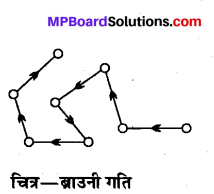
(ii) स्व-उत्प्रेरण (Autocatalysis)-जब क्रिया से उत्पन्न पदार्थों में से कोई पदार्थ उत्प्रेरक का कार्य करने लगता है तो वह स्व-उत्प्रेरक कहलाता है तथा अभिक्रिया को स्व-उत्प्रेरण कहते हैं।
उदाहरण-एथिल ऐसीटेट के जल-अपघटन से ऐसीटिक अम्ल बनता है, जो स्व-उत्प्रेरक का कार्य करता है।

![]()
प्रश्न 2.
द्रव-स्नेही और द्रव-विरोधी कोलॉइड में अन्तर स्पष्ट कीजिए।
उत्तर
द्रव-स्नेही (Lyophillic) व द्रव-विरोधी (Lyophobic) कोलॉइड में अन्तर –
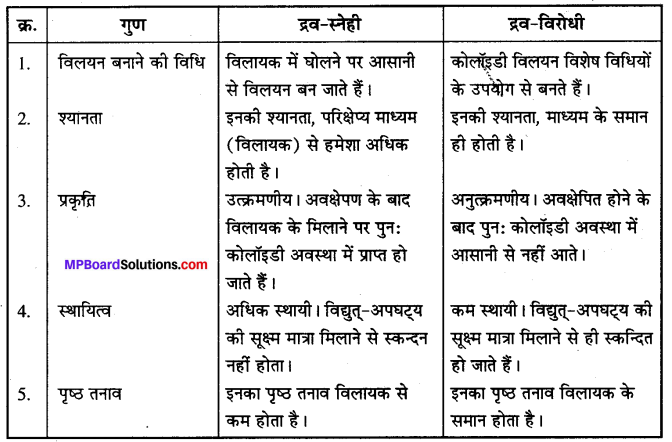
प्रश्न 3.
हार्डी-शूल्जे का नियम क्या है ?
उत्तर
हार्डी-शूल्जे का नियम-धन आवेश वाले कोलॉइड कण जैसे कोलॉइड Fe(OH), का स्कन्दन SO2-4,PO3-4 आदि आयनों से तथा As2S3 जैसे ऋणावेश वाले कोलॉइड Ba2+, Al3+ आदि आयनों द्वारा स्कन्दित होते हैं। विभिन्न आयनों की स्कन्दन क्षमता हार्डी शूल्जे नियम द्वारा प्रतिपादित की गई है जिसके अनुसार, “किसी आयन की स्कन्दन शक्ति उसकी संयोजकता पर निर्भर है, जितनी अधिक संयोजकता होगी उतनी ही अधिक स्कन्दन शक्ति होगी।”

प्रश्न 4.
उत्प्रेरक के माध्यमिक यौगिक सिद्धान्त को उदाहरण देकर समझाइए।
उत्तर
माध्यमिक यौगिक सिद्धान्त इस सिद्धान्त के अनुसार उत्प्रेरक किसी एक अभिकारक के साथ संयोग करके एक माध्यमिक यौगिक बनाता है। माध्यमिक यौगिक फिर दूसरे अभिकारक के साथ क्रिया करके अभीष्ट यौगिक बनाता है तथा उत्प्रेरक मुक्त हो जाता है जो उपर्युक्त अनुसार पुनः कार्य करता है। यदि पदार्थ A व B संयोग करके यौगिक AB बनाते हैं तब प्रयुक्त उत्प्रेरक X का कार्य इस सिद्धान्त के अनुसार निम्न प्रकार से समझाया जा सकता है –
A + X → AX माध्यमिक यौगिक
AX + B → AB + X
इस प्रकार मुक्त हुआ उत्प्रेरक बार-बार क्रिया में भाग लेता रहता है। अभिक्रिया में लगा समय, A व B के मध्य सीधी अभिक्रिया में लगने वाले समय से कम होगा।
उदाहरण-सीस-कक्ष विधि द्वारा सल्फ्यूरिक अम्ल (H2SO4) के निर्माण में नाइट्रिक ऑक्साइड (NO) उत्प्रेरक का कार्य करता है। यह पहले ऑक्सीजन से संयोग करके NO2 (नाइट्रोजन परॉक्साइड) (माध्यमिक यौगिक) बनाता है। NO2 फिर सल्फर डाइ-ऑक्साइड (SO2) से क्रिया करके SO3 (सल्फर ट्राइ-ऑक्साइड) बनाता है तथा उत्प्रेरक NO मुक्त हो जाता है, जो अभिक्रिया को श्रृंखला के रूप में बढ़ाता रहता है।
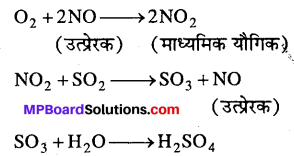
प्रश्न 5.
एन्जाइम उत्प्रेरक व सामान्य उत्प्रेरक में कोई पाँच अन्तर लिखिए।
उत्तर
एन्जाइम उत्प्रेरक और सामान्य उत्प्रेरक में अन्तर-
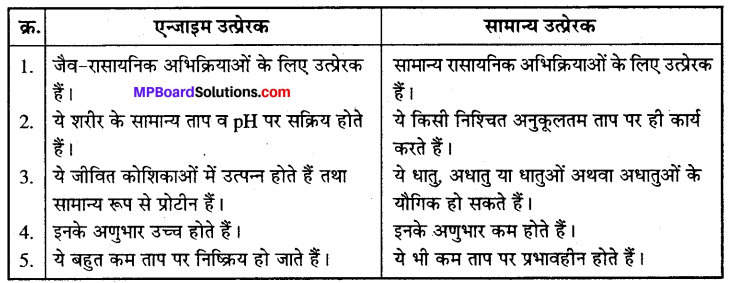
प्रश्न 6.
अधिशोषण क्या है ? इसे प्रभावित करने वाले कारकों का वर्णन कीजिए।
अथवा
(a) ठोसों के द्वारा गैसों की अधिशोषण की मात्रा किन कारकों पर निर्भर करती है ? (छः कारक)
(b) अधिशोषण के पाँच अनुप्रयोग लिखिए।
उत्तर
जब किसी पदार्थ (गैस या द्रव) की किसी ठोस की सतह पर संलग्न सान्द्रता उसके स्थूल (Bulk) में उपस्थित सान्द्रता की अपेक्षा अधिक होती है तब इस घटना को अधिशोषण (Adsorption) कहते हैं। यह एक पृष्ठ घटना है जो कि किसी ठोस की सतह पर असन्तुलित बलों की उपस्थिति के कारण होती है।
(a) किसी गैस का ठोस पर अधिशोषण निम्नलिखित कारकों पर निर्भर करती है –
1. अधिशोषक की प्रकृति-कठोर तथा रन्ध्रहीन (Non-porous) पदार्थों की तुलना में रन्ध्रयुक्त (Porous) तथा महीन चूर्ण के रूप में ठोस पदार्थ जैसे चारकोल आदि में अधिशोषण अधिक होता है। इसी गुण के कारण गैस मॉस्क में चारकोल पाउडर का उपयोग होता है। इसका कारण है, रन्ध्रयुक्त या चूर्ण रूप में होने पर ठोस का पृष्ठ क्षेत्रफल बहुत अधिक बढ़ जाता है।
2. ठोस अधिशोष्य के पृष्ठ का क्षेत्रफल-अधिशोषण का कम या अधिक होना अधिशोष्य के पृष्ठ के क्षेत्रफल पर निर्भर करता है। अधिशोष्य के पृष्ठ का क्षेत्रफल जितना अधिक होगा, अधिशोषण उतना ही अधिक होगा। सूक्ष्म वितरित (Finely divided) ठोस में अधिक अधिशोषण होने का यही कारण है।
3. अधिशोष्य गैस का दाब-साम्यावस्था पर अधिशोषक पर अधिशोष्य गैस के दाब का मान बढ़ाने से अधिशोषण बढ़ जाता है। कम ताप पर गैस में वृद्धि करने से अधिशोषण की मात्रा तेजी से बढ़ती है, किन्तु उच्च दाब पर अधिशोषण एक अधिकतम मान प्राप्त कर लेता है।
4. ताप (Temperature)—अधिशोषण एक ऊष्माक्षेपी प्रक्रम है। अतः लीशातेलिए सिद्धान्त से, ताप बढ़ाने पर अधिशोषण कम हो जाता है।
5.अधिशोषक का सक्रियण-यह किसी अधिशोषक की अधिशोषण शक्ति को बढ़ाने की विधि है, जैसे-अधिशोषक को यान्त्रिक विधियों द्वारा खुरदुरा बनाया जाता है या अधिशोषक को दानेदार बनाकर पृष्ठ क्षेत्रफल में वृद्धि की जाती है।
6.गैस की प्रकृति-अधिशोषक अधिशोषण की प्रवृत्ति वाले गैसों की प्रकृति पर निर्भर करती है। H2, O2, N2, की तुलना में CO2, NH3, Cl2 आदि का अधिशोषण अधिक होता है। .
(b) हमारे दैनिक जीवन में अधिशोषण के अनेक उपयोग हैं, उनमें से कुछ निम्नलिखित हैं –
- गैस मॉस्क में-विषैली गैसें, जैसे-CO, CH4 आदि को दूर करने के लिए गैस मॉस्क में सक्रियित चारकोल प्रयुक्त होता है, जो वायुमण्डल में उपस्थित विषैली गैसों को अधिशोषित कर लेते हैं। ..
- चीनी के निर्माण में-चीनी के निर्माण में जन्तु चारकोल का प्रयोग, इसे रंगहीन करने में करते हैं।
- नमी दूर करने में-सिलिका जेल का उपयोग नमी को दूर करने में किया जाता है।
- क्रोमैटोग्राफी में-क्रोमैटोग्राफी द्वारा यौगिकों का शुद्धिकरण भी अधिशोषण सिद्धान्त पर आधारित
- उत्प्रेरण में-विषमांग उत्प्रेरक प्रक्रिया में अधिशोषण प्रक्रम की महत्वपूर्ण भूमिका होती है।
![]()
प्रश्न 7.
कोलॉइड रसायन के कोई पाँच अनुप्रयोग लिखिए। उत्तर-कोलॉइड रसायन के पाँच अनुप्रयोग निम्नलिखित हैं
- औषधियों में अनेक औषधियों का उपयोग कोलॉइड के रूप में ही होता है, क्योंकि कोलॉइड अवस्था में होने के कारण शरीर द्वारा इनका शोषण एवं पाचन आसानी से हो जाता है। जैसे-कोलॉइडी गोल्ड तथा कैल्सियम बल वर्धक औषधियों के रूप में काम आता है।
- जल को शुद्ध करना-अशुद्ध जल में धूल, मिट्टी के कण, बैक्टीरिया आदि की अशुद्धियाँ कोलॉइडी रूप में रहती है और इन अशुद्धियों पर ऋण आवेश होता है। जब इस जल में फिटकरी डालते हैं तो उससे AI+ आयन इस ऋणावेशित कणों आदि की अशुद्धियों को उदासीन कर देते हैं तथा अवक्षेप के रूप में नीचे बैठ जाते हैं और शुद्ध जल को निकालकर पृथक् कर लेते हैं।
- नदियों के डेल्टा बनाने में-नदी के जल में मिट्टी के कण कोलॉइडी अवस्था में होते हैं जिन पर ऋण आवेश होता है। जब नदी समुद्र में गिरती है तो उसमें उपस्थित विद्युत्-अपघट्य इन ऋणावेशित मिट्टी के कणों का स्कन्दन कर देते हैं जो डेल्टा के रूप में बन जाता है।
- चमड़ा उद्योग में-चमड़े में प्रोटीन कोलॉइडी अवस्था में रहता है। इन कणों पर धनावेश होता है। पेड़ों की छाल से प्राप्त ऋणावेशित टेनिन का कोलॉइडी विलयन चमड़े पर डाले जाते हैं जिससे वे परस्पर स्कंदित हो जाते हैं और चमड़ा कड़ा हो जाता है और सड़ने नहीं पाता।।
- साबुन की क्रिया में-साबुन पानी के साथ कोलॉइडी विलयन देता है। कोलॉइडी विलयन का गुण अधिशोषण करने का होता है। कपड़ों में उपस्थित धूल के कणों का कोलॉइडी साबुन द्वारा उसकी सतह पर अधिशोषण हो जाता है और सतह से ये धूल के कण पानी द्वारा धोने पर दूर हो जाते हैं।
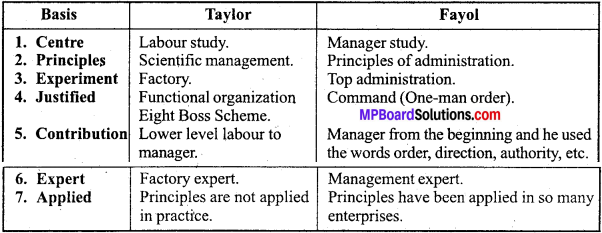

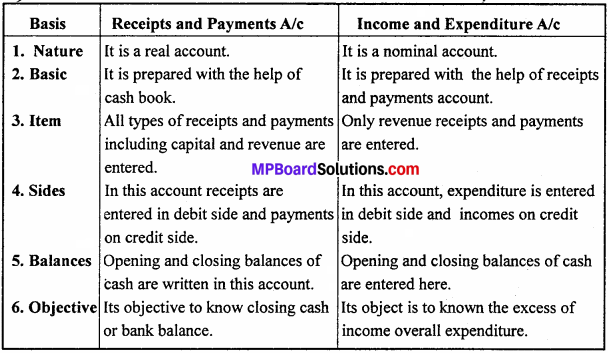
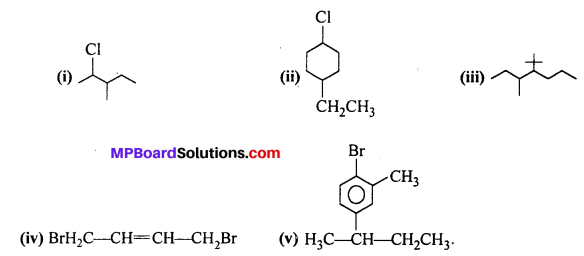
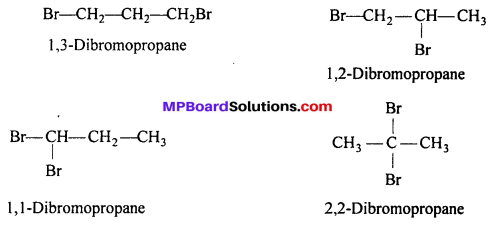
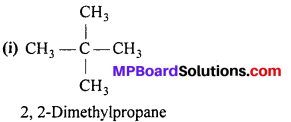

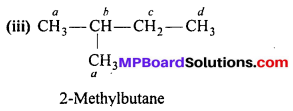
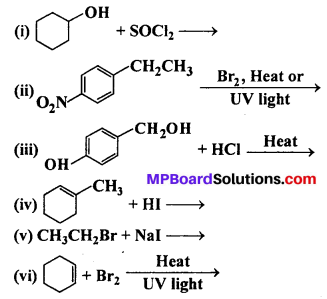
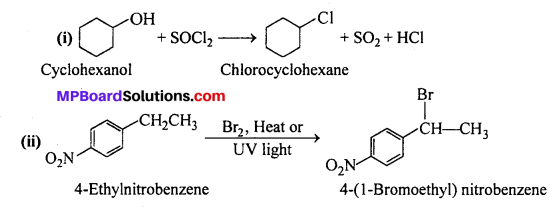
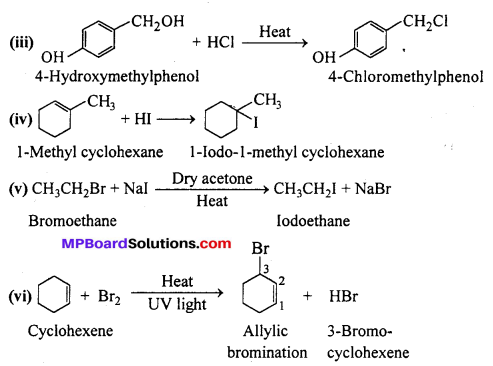
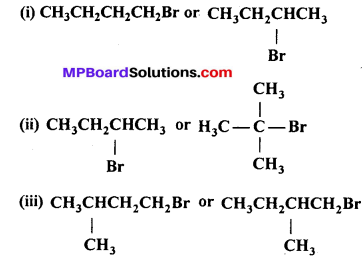





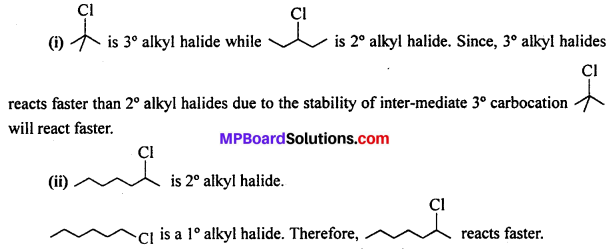
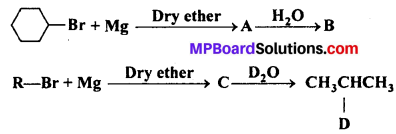


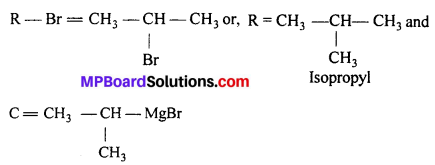
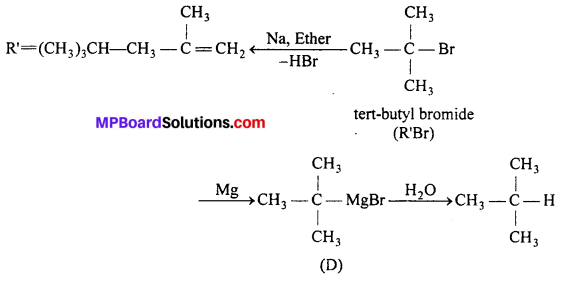
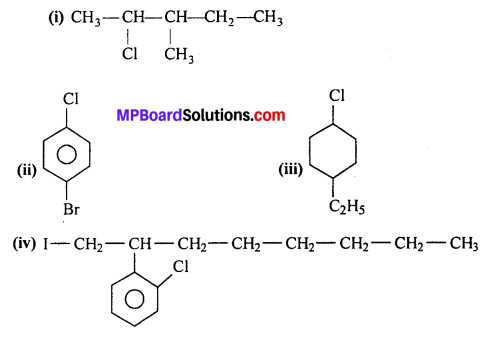
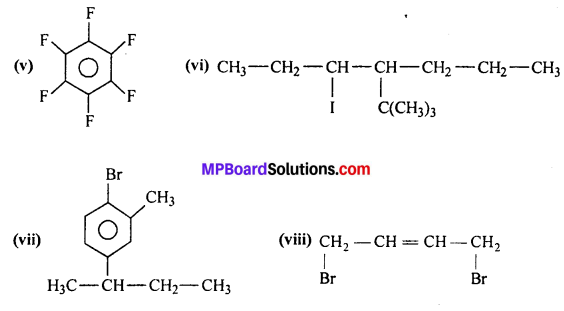

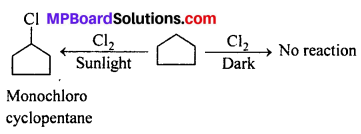
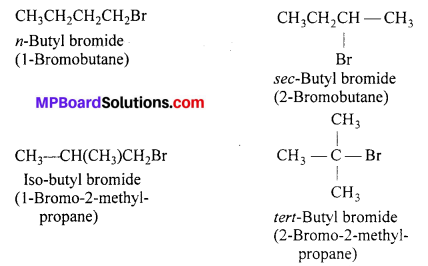


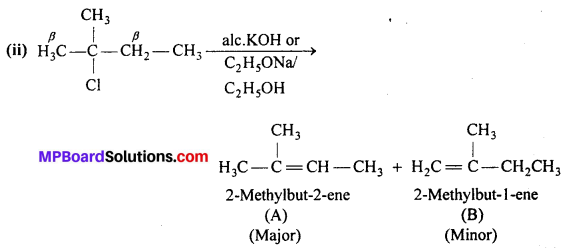
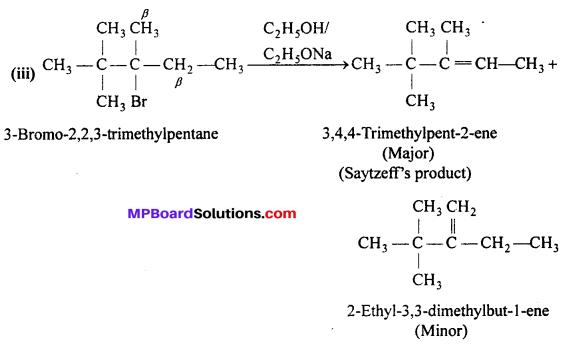

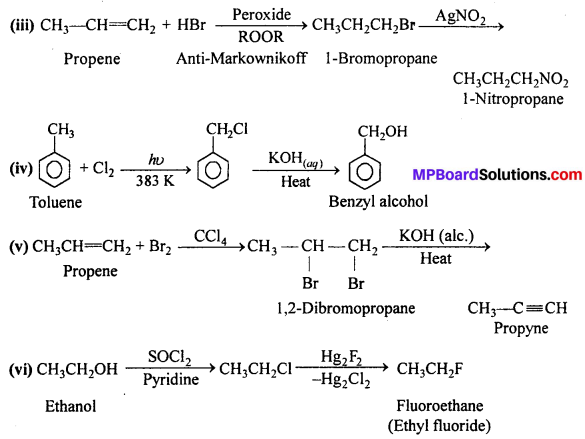
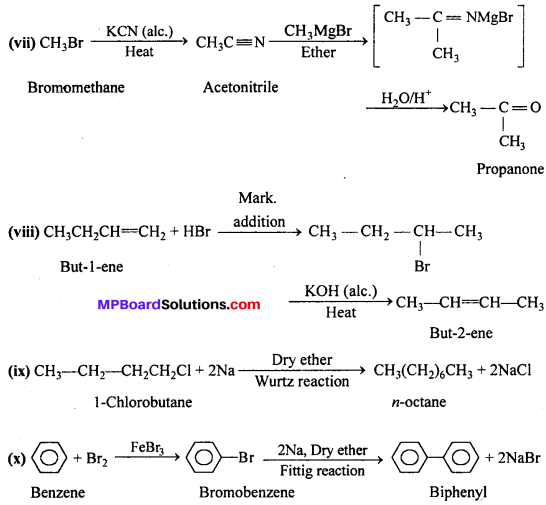

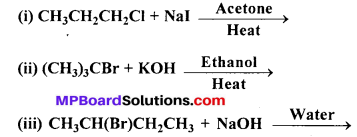
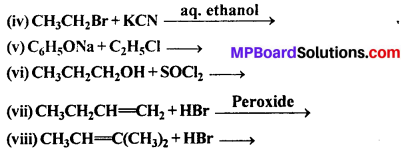

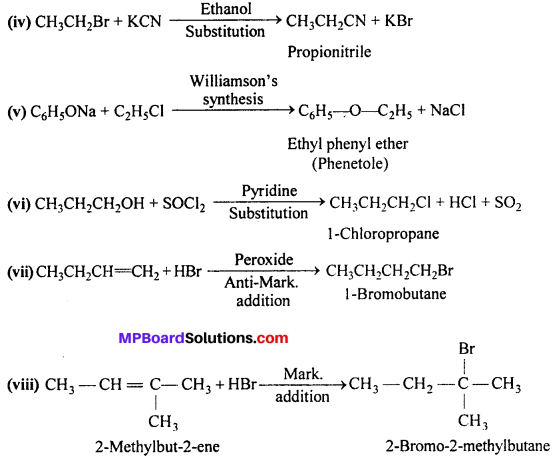


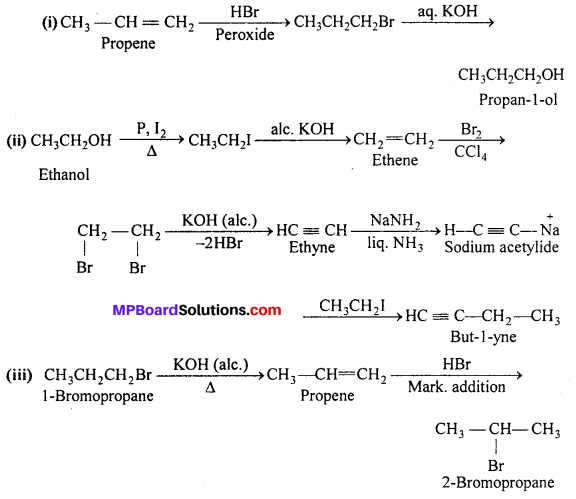
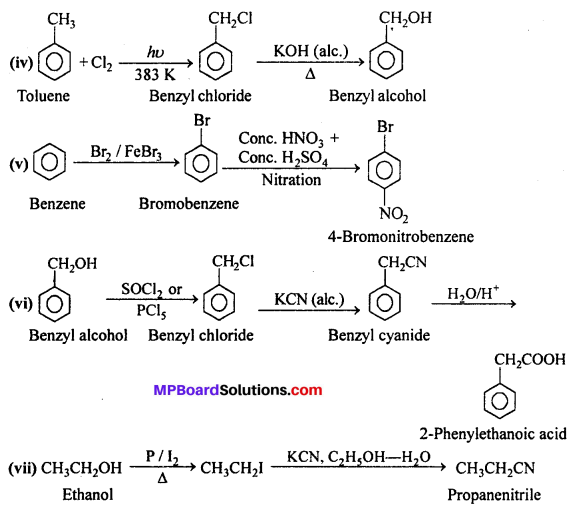
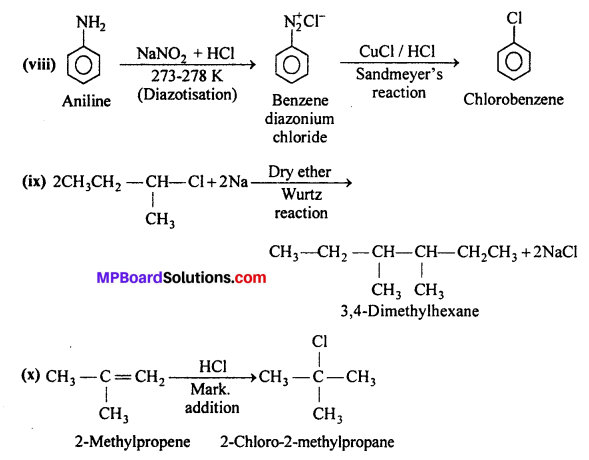
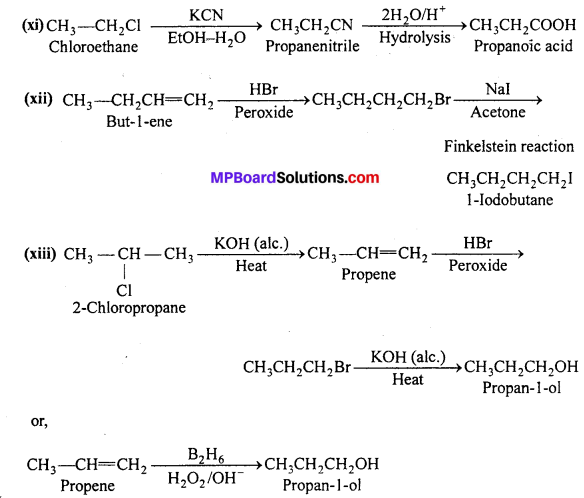
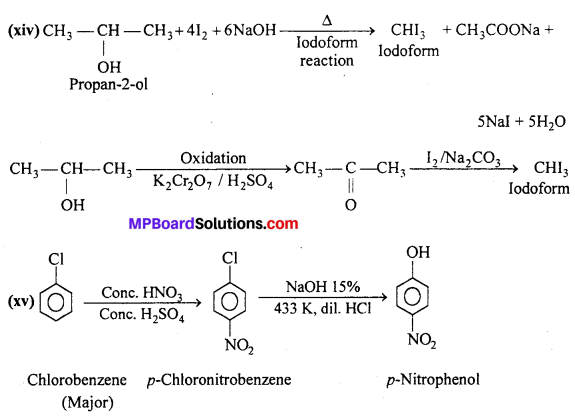
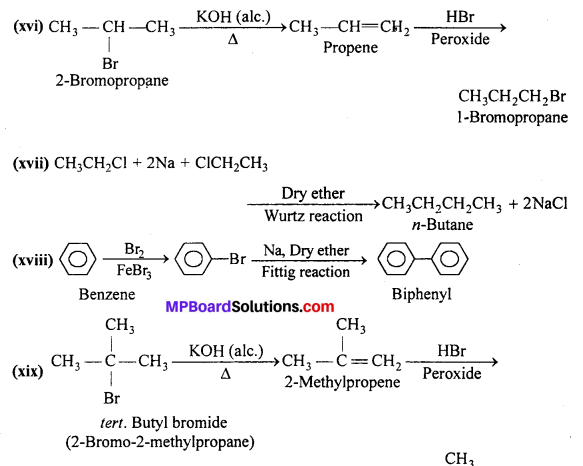
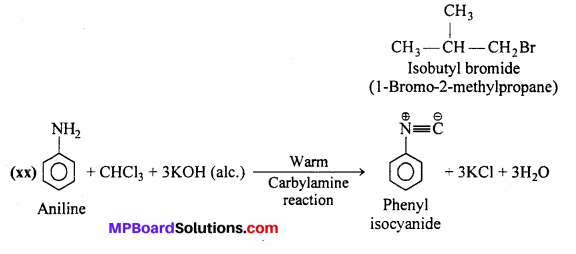
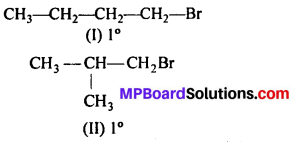
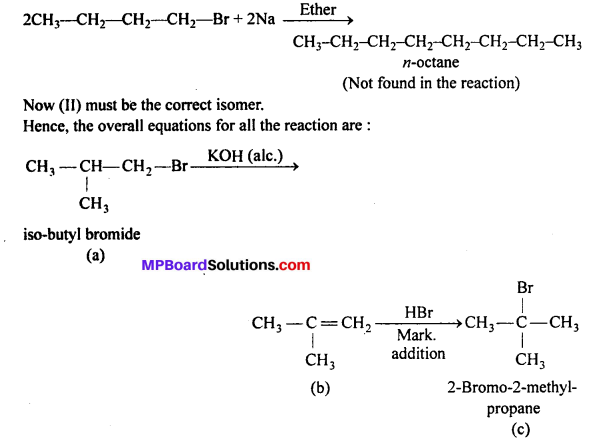
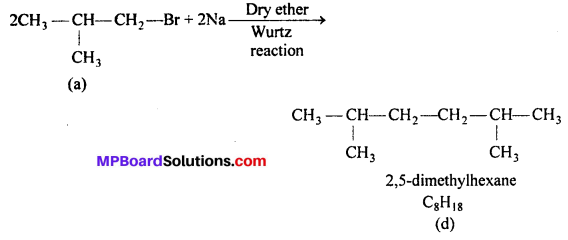
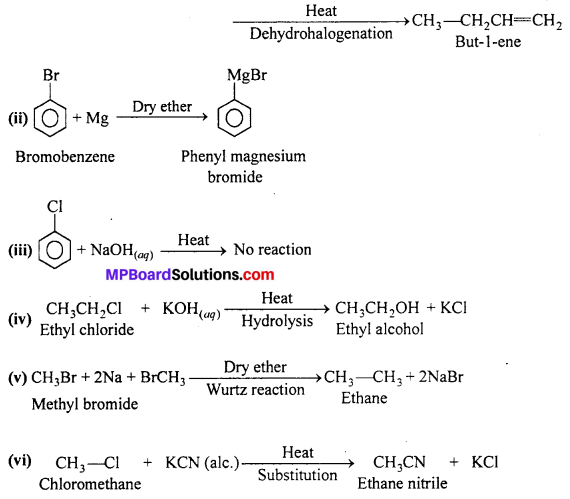
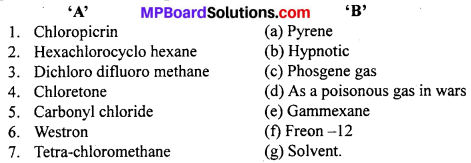

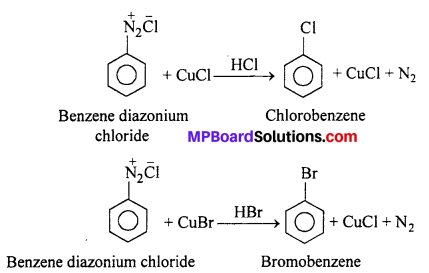




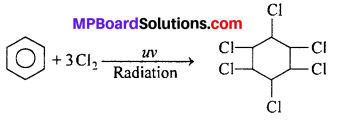
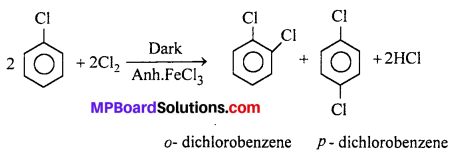





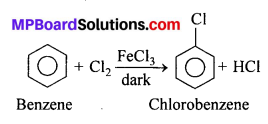
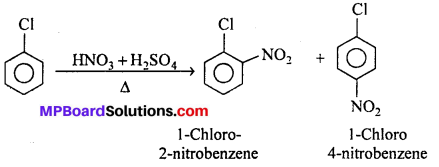
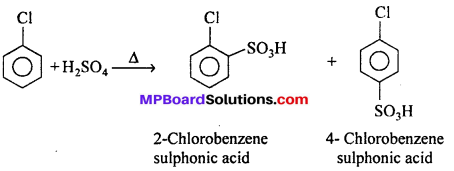








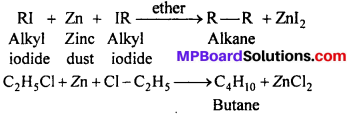



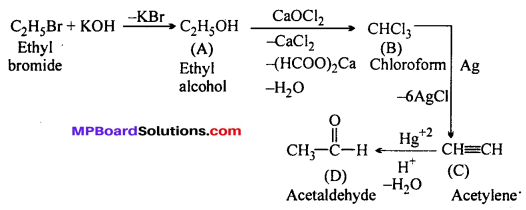
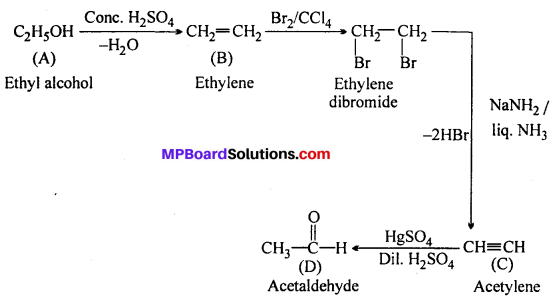







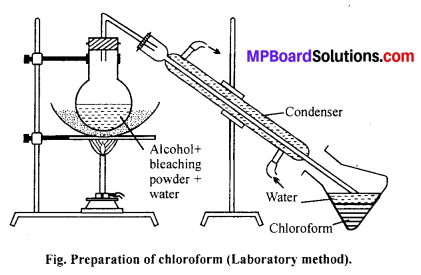















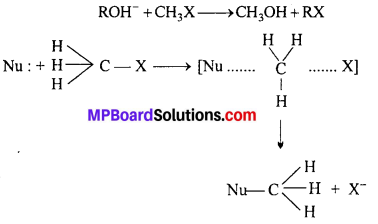
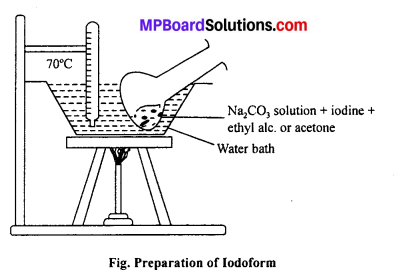

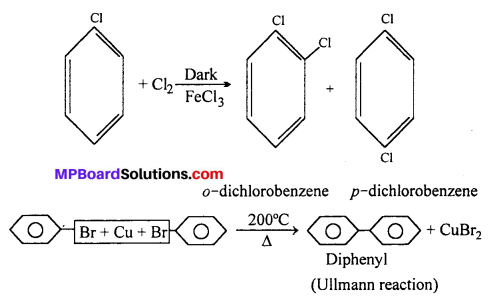
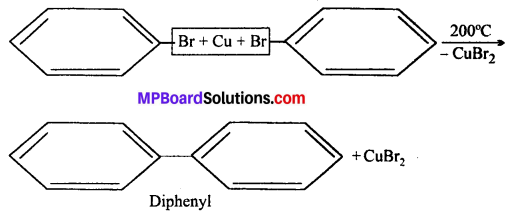

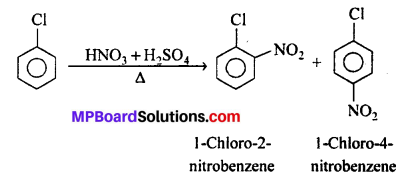
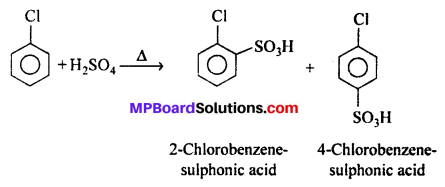



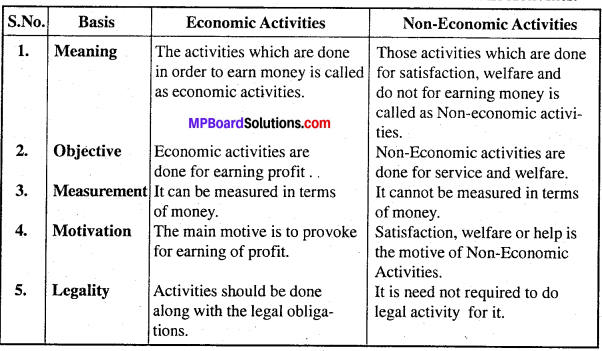
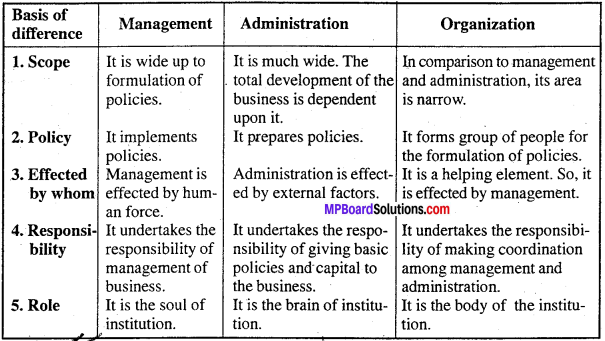
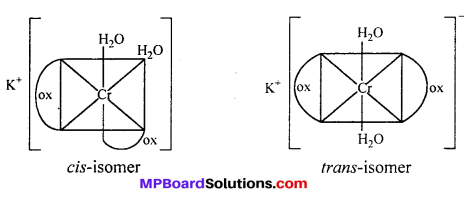
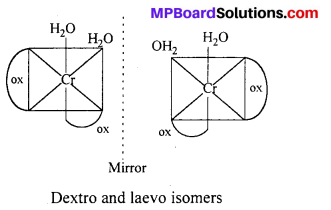
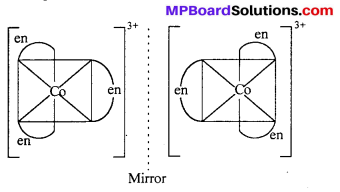
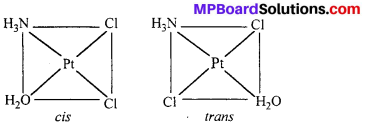


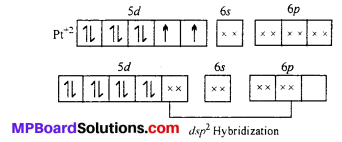
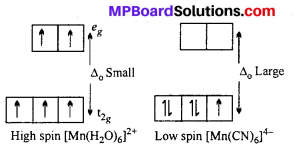

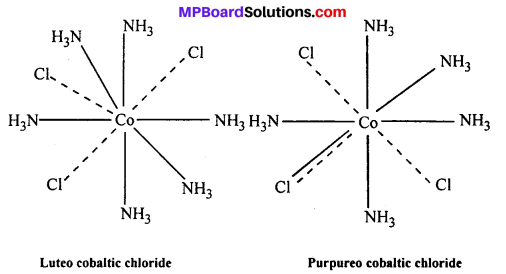


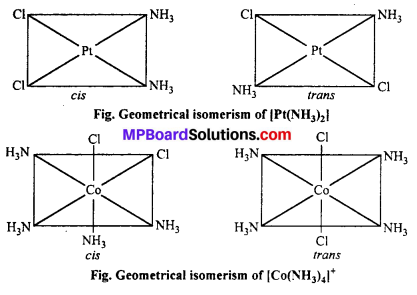
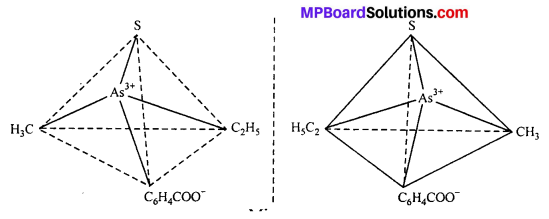
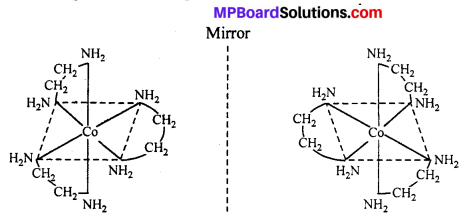
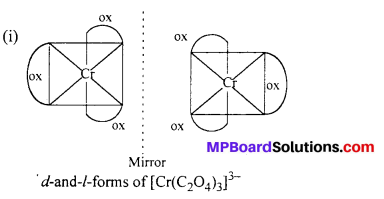
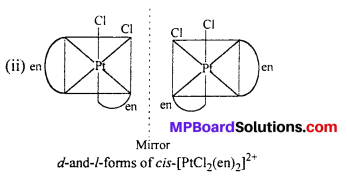
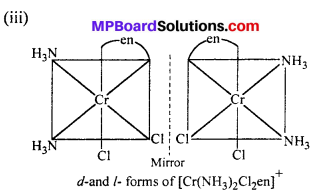
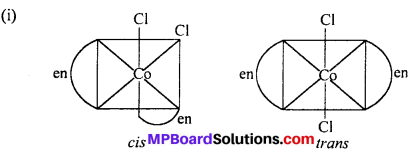
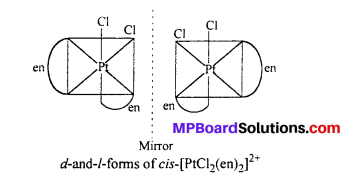
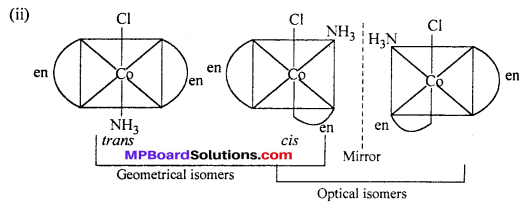

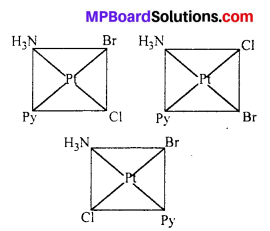
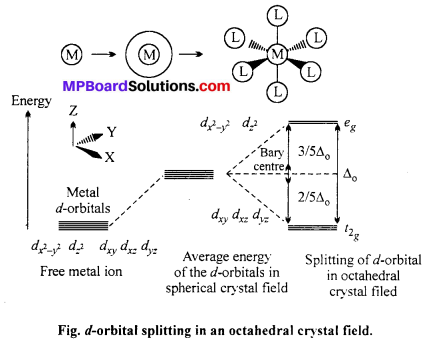
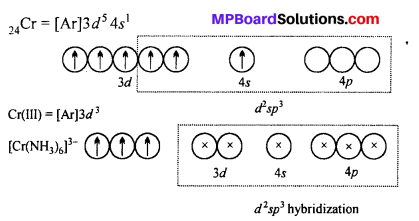

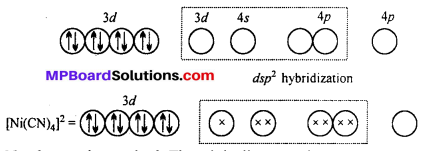

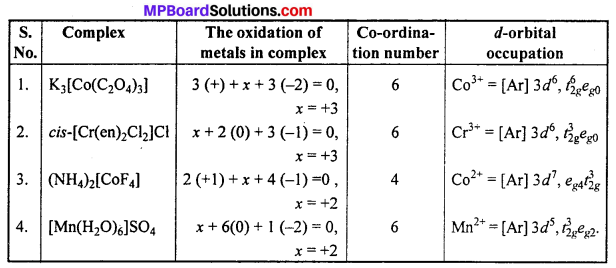
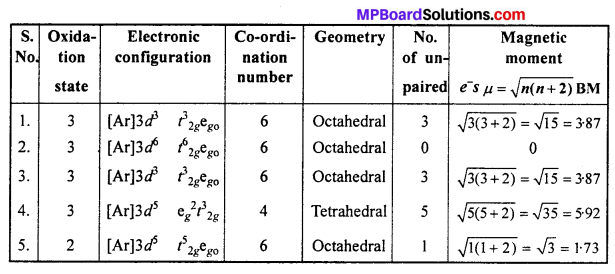






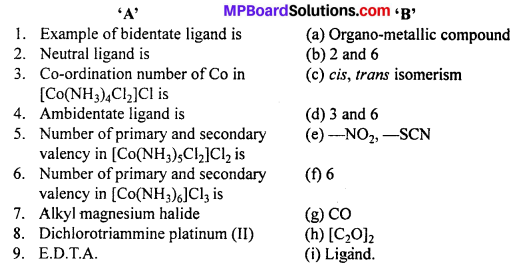


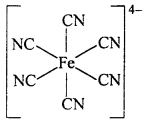


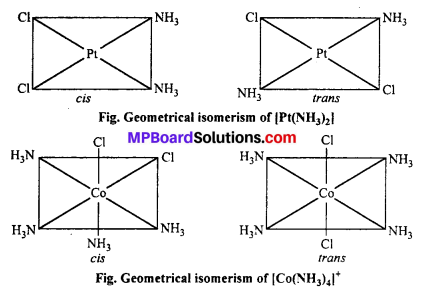
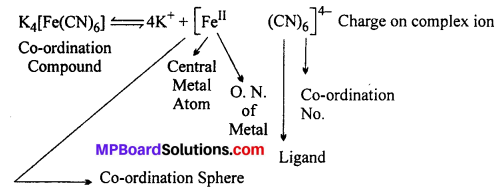
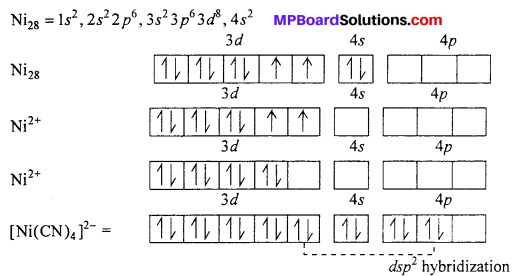
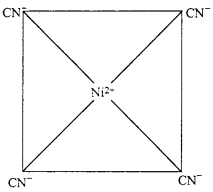
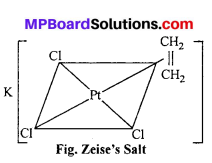

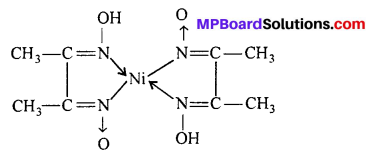



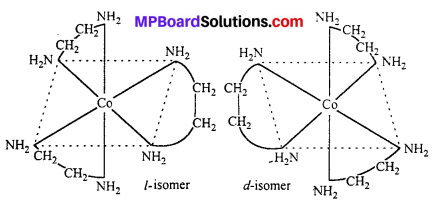
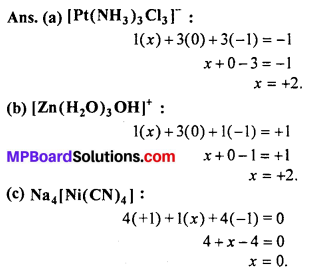


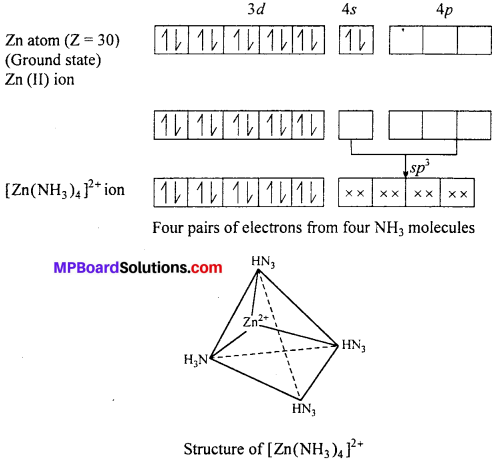
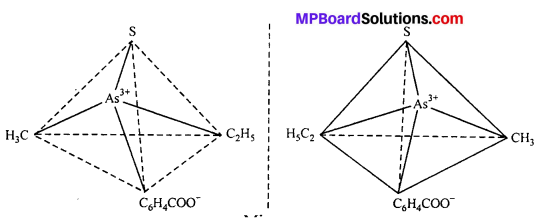
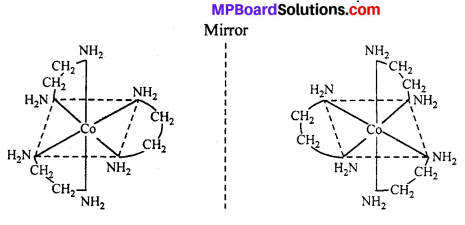
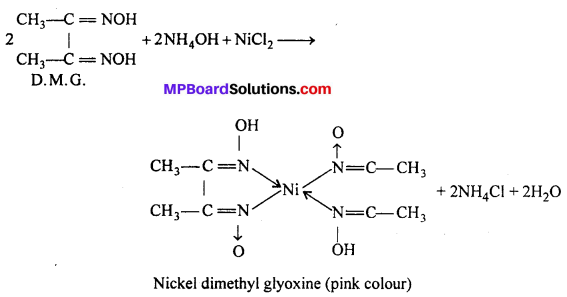
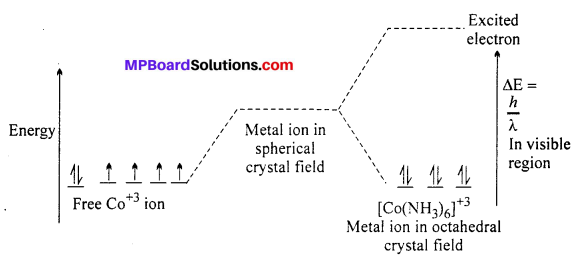
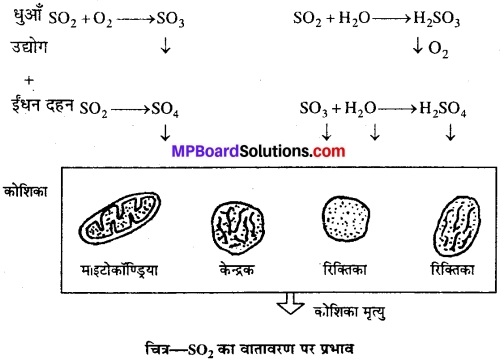


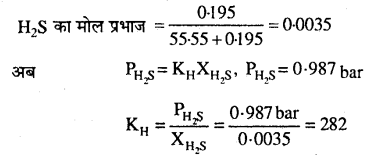
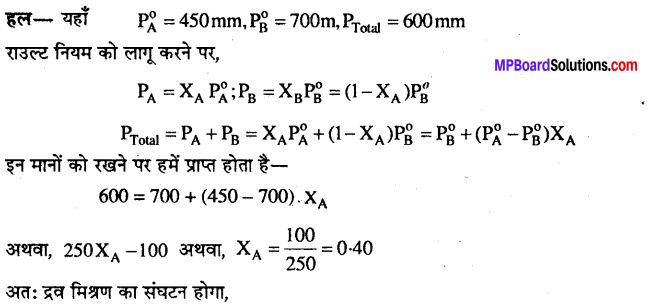
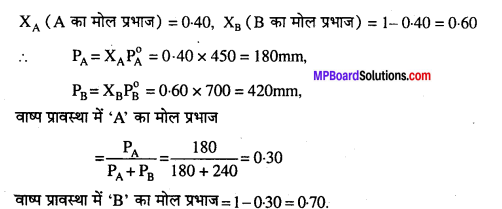

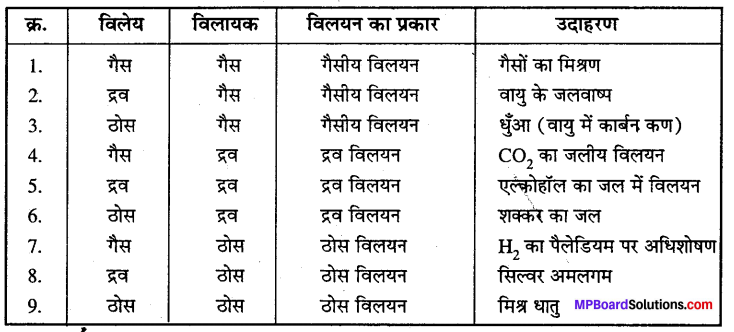




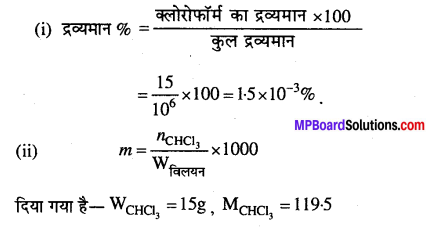
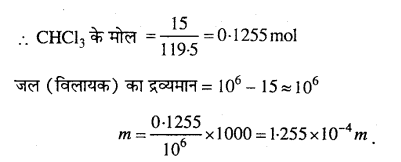
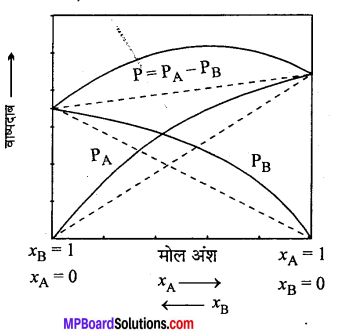
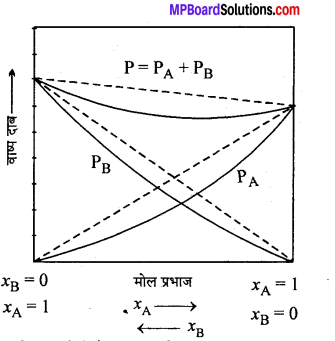
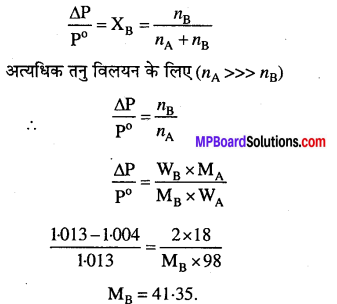
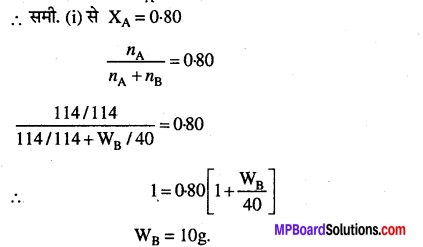


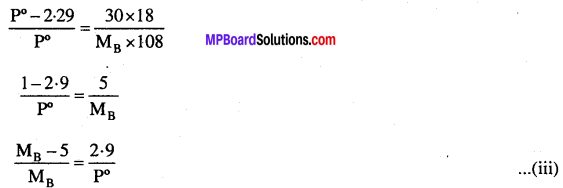
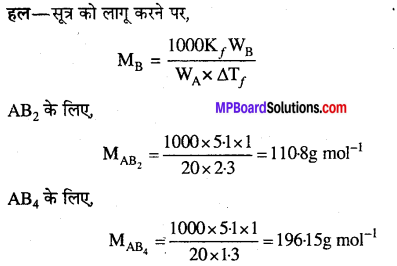


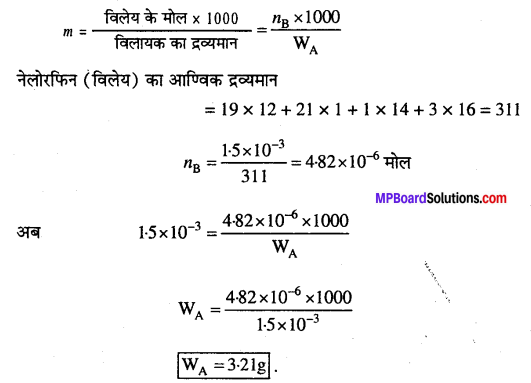

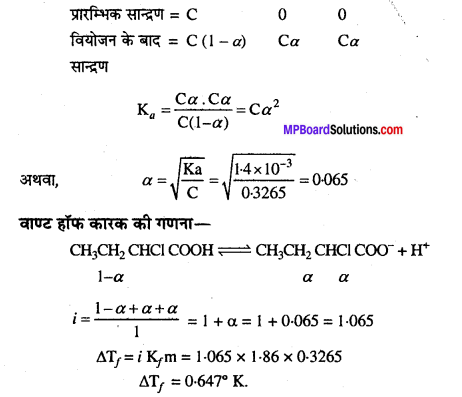
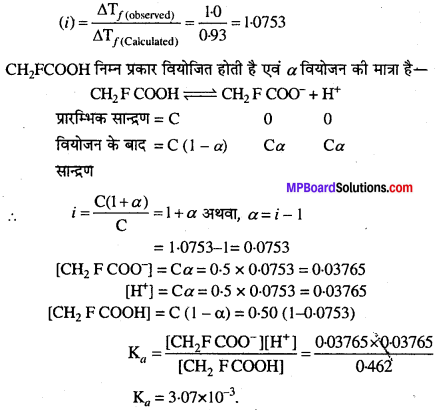
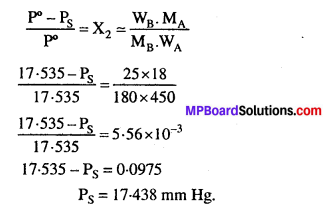
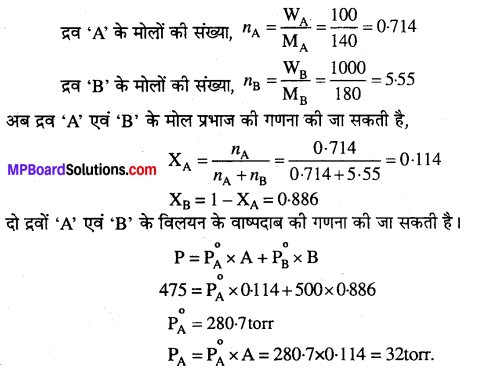


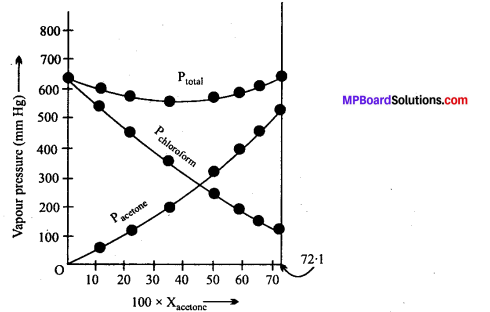
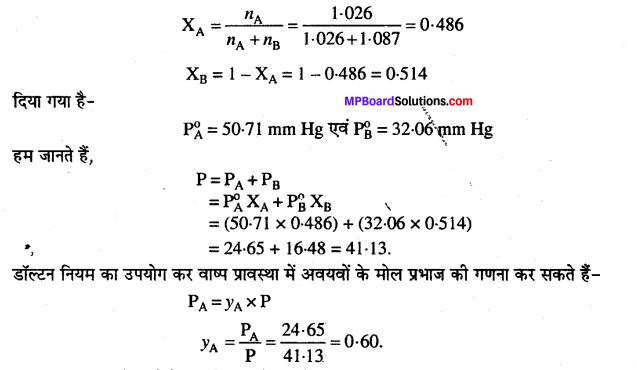
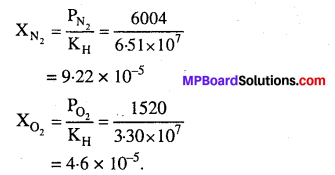
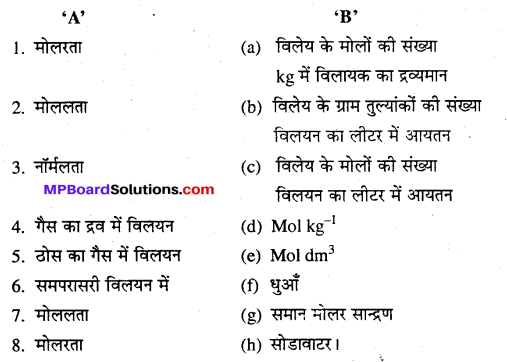




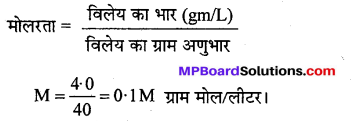


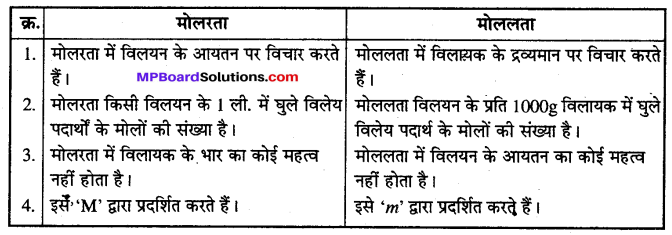




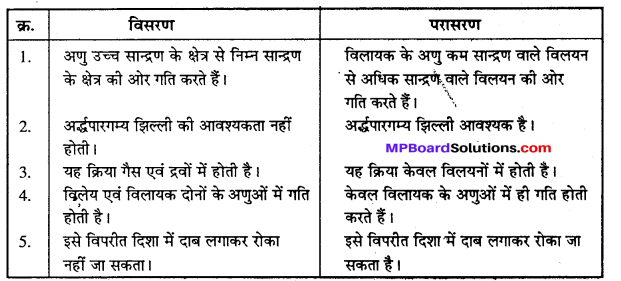
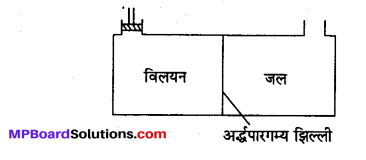

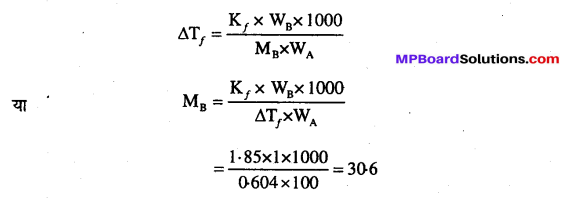
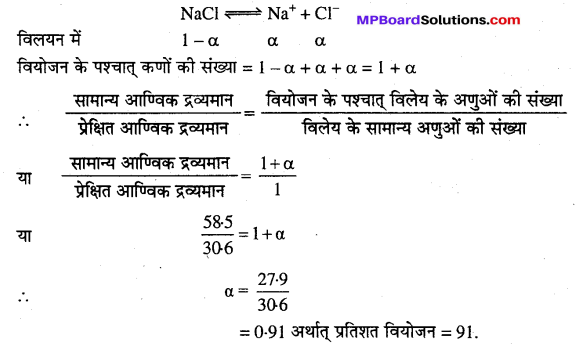
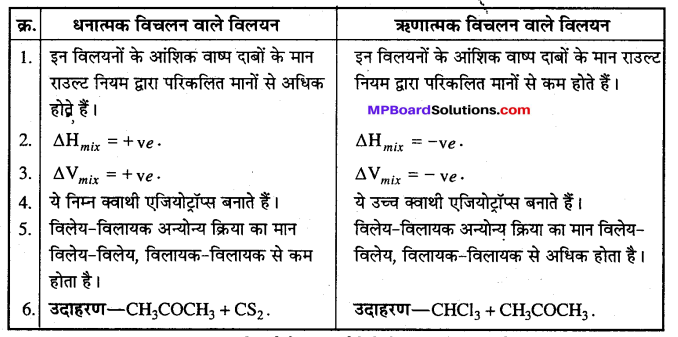
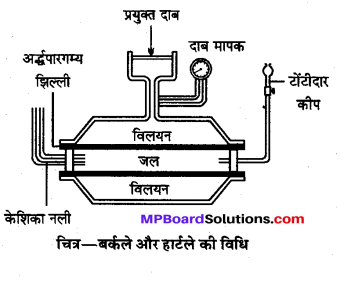
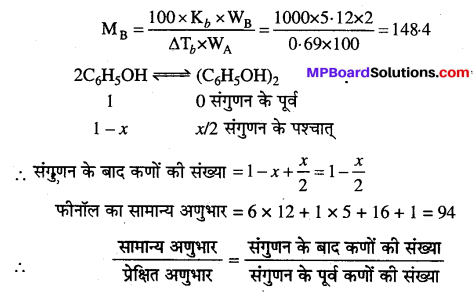



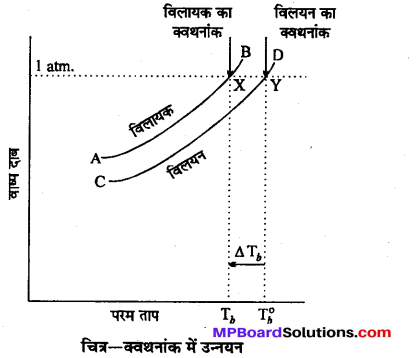
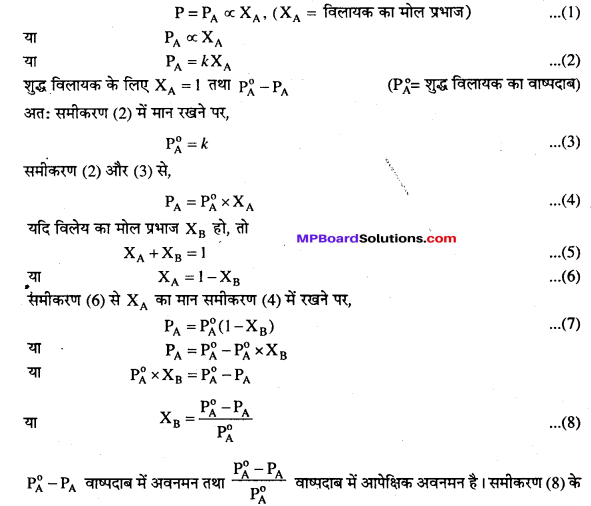
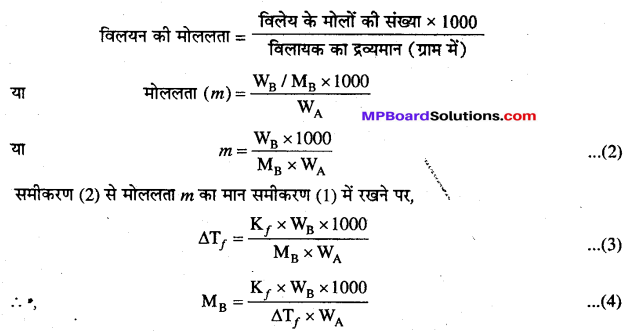




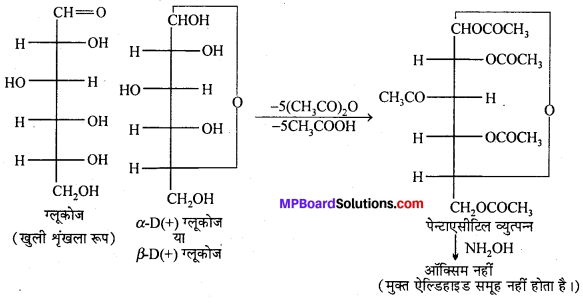
 इस द्विध्रुव के लवण के समान गुण होने के कारण इनमें प्रबल द्विध्रुव-द्विध्रुव आकर्षण या स्थिर विद्युतीय आकर्षण पाया जाता है। अतः इनके गलनांक हैलो अम्लों से उच्च होते हैं जिनमें लवण के समान लक्षण नहीं होते हैं तथा लवण के समान गुण होने के कारण इनका जल के साथ प्रबलतम आकर्षण होता है । अतः एमीनो अम्ल की जल में घुलनशीलता उनके संगत हैलो अम्लों जिनमें लवण के समान लक्षण नहीं होते हैं से ज्यादा होती है।
इस द्विध्रुव के लवण के समान गुण होने के कारण इनमें प्रबल द्विध्रुव-द्विध्रुव आकर्षण या स्थिर विद्युतीय आकर्षण पाया जाता है। अतः इनके गलनांक हैलो अम्लों से उच्च होते हैं जिनमें लवण के समान लक्षण नहीं होते हैं तथा लवण के समान गुण होने के कारण इनका जल के साथ प्रबलतम आकर्षण होता है । अतः एमीनो अम्ल की जल में घुलनशीलता उनके संगत हैलो अम्लों जिनमें लवण के समान लक्षण नहीं होते हैं से ज्यादा होती है।